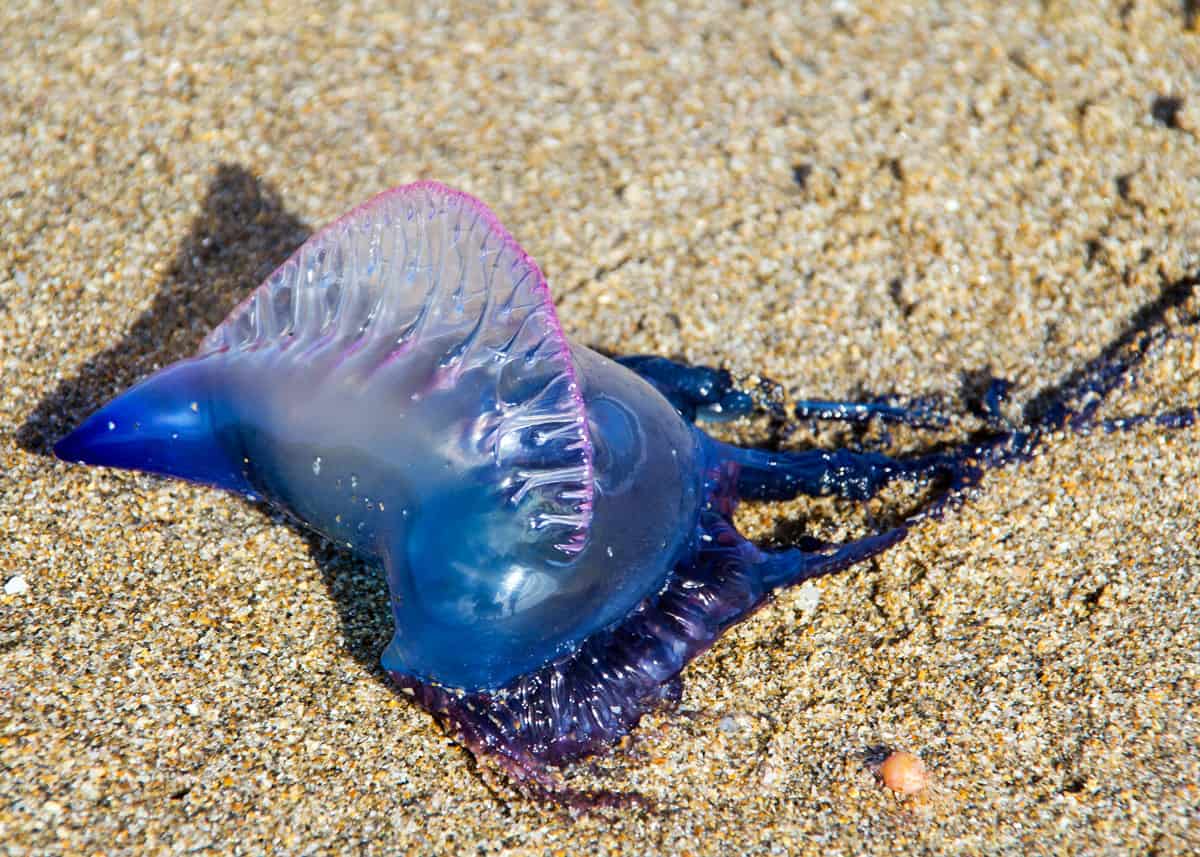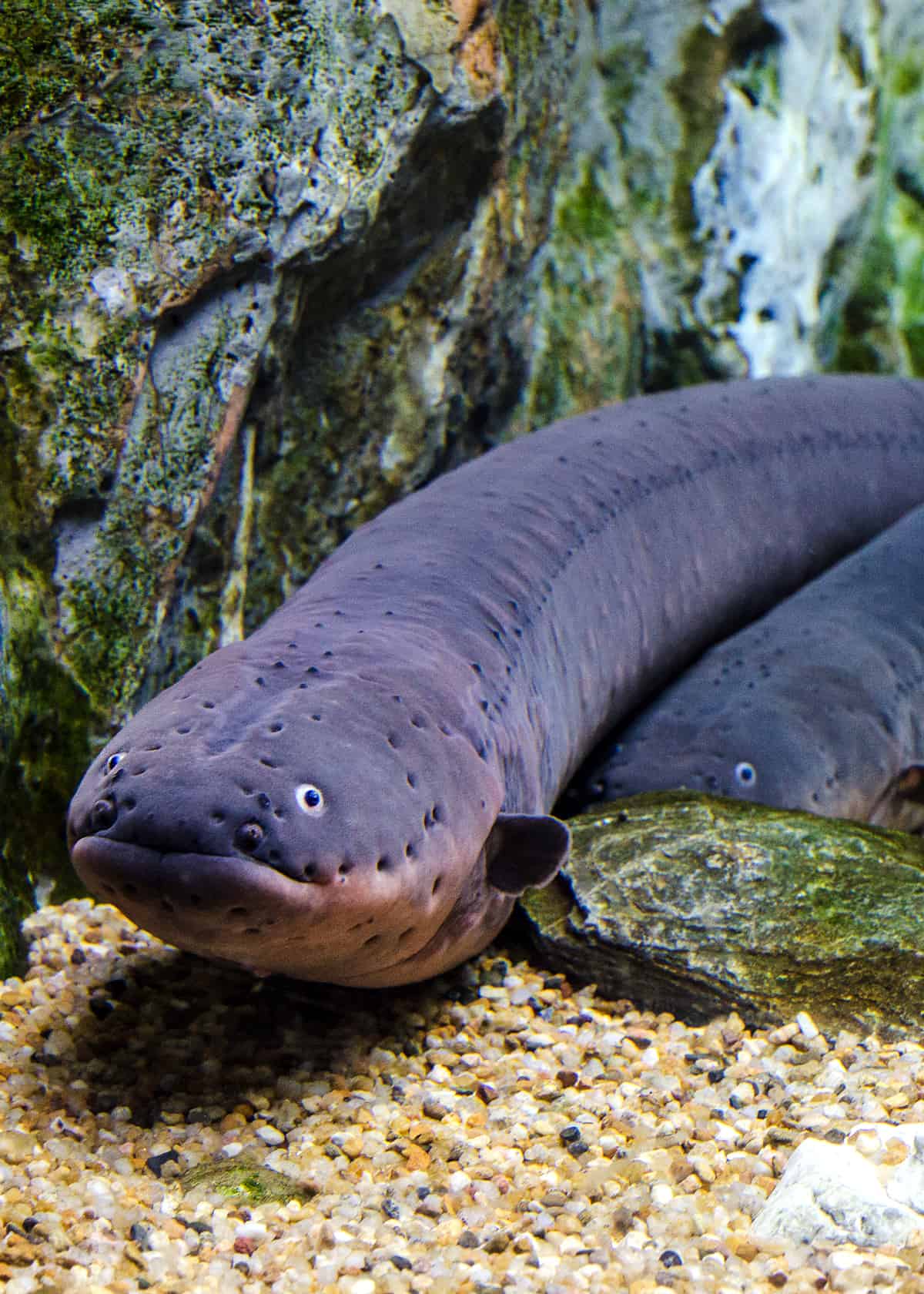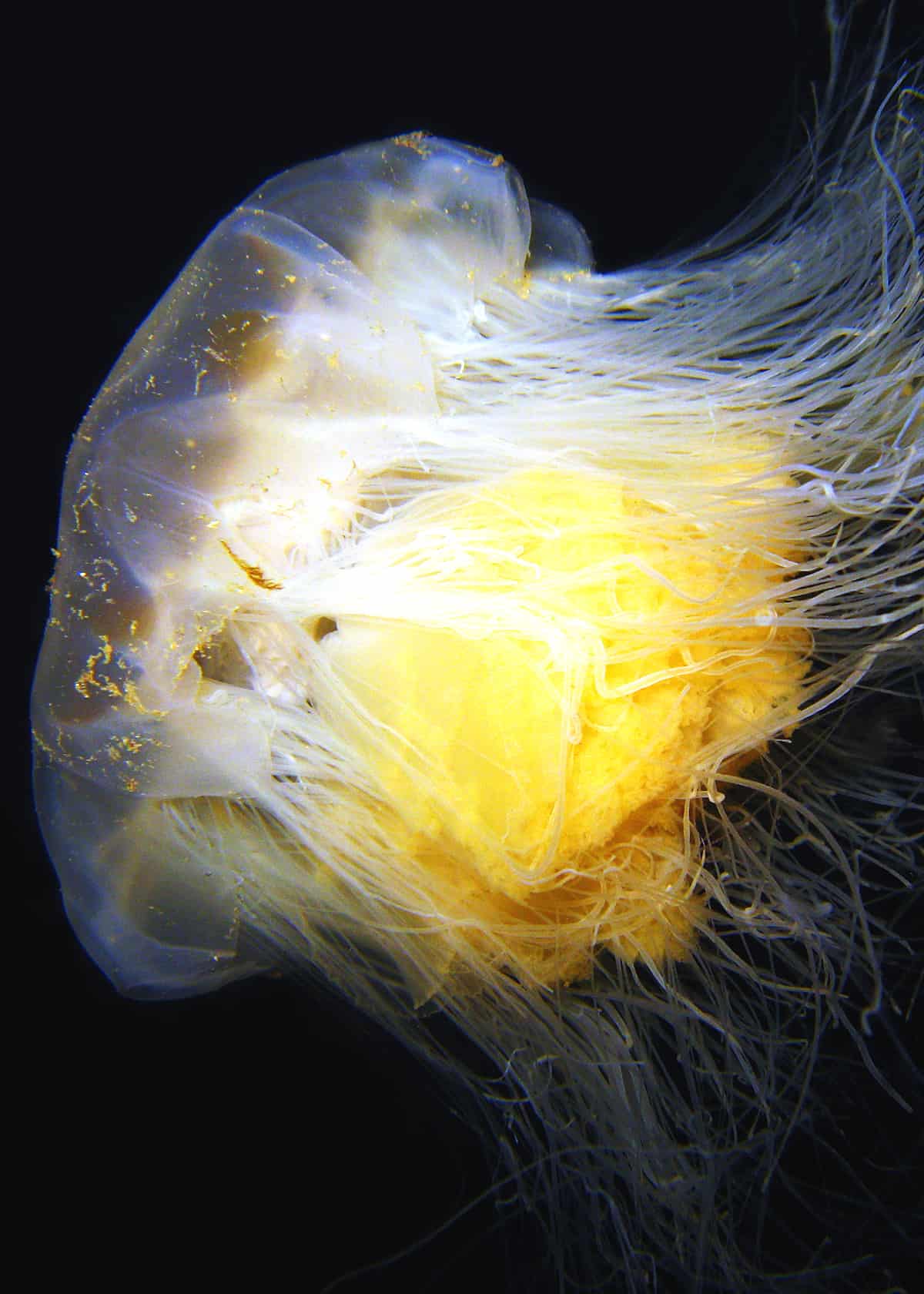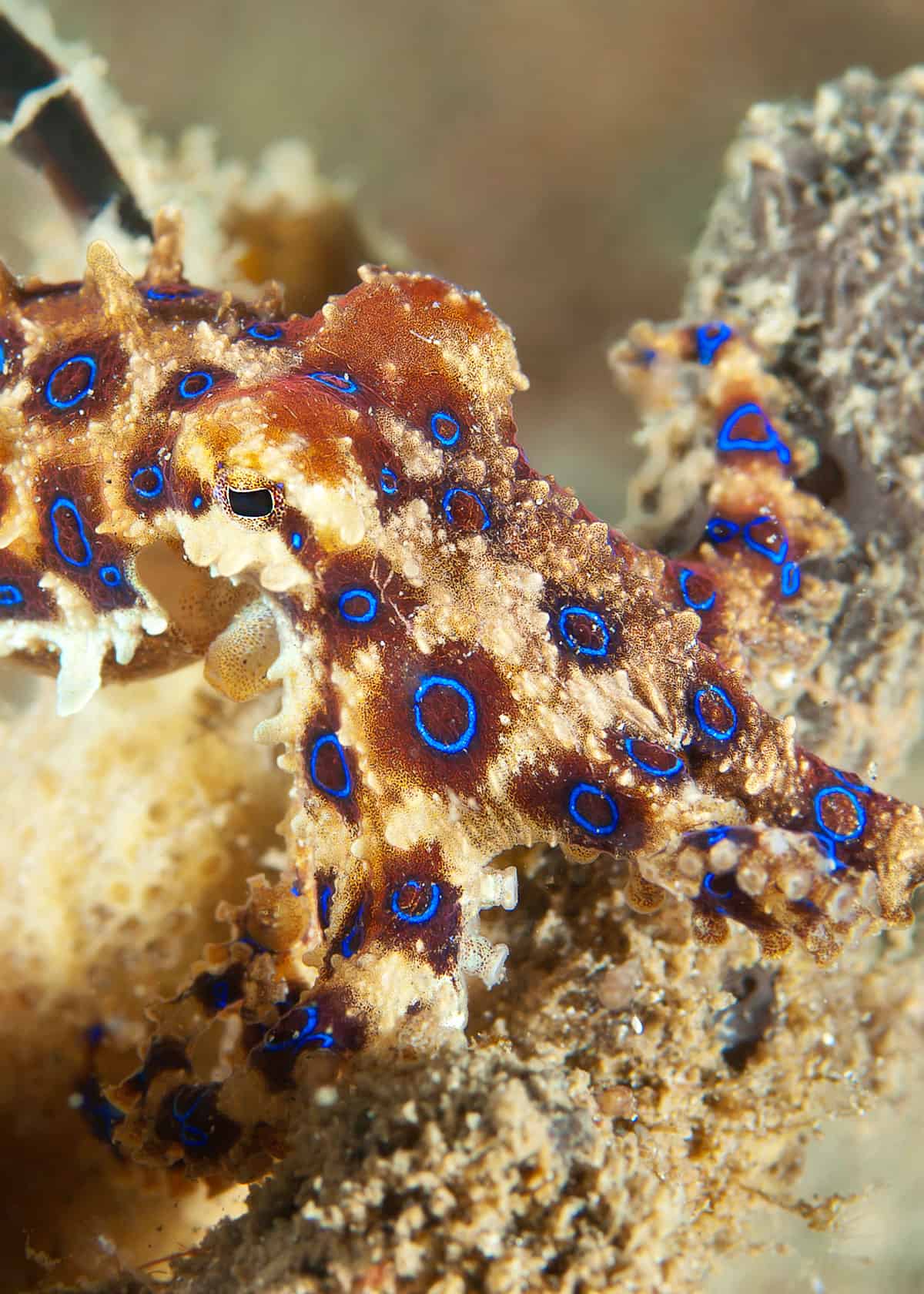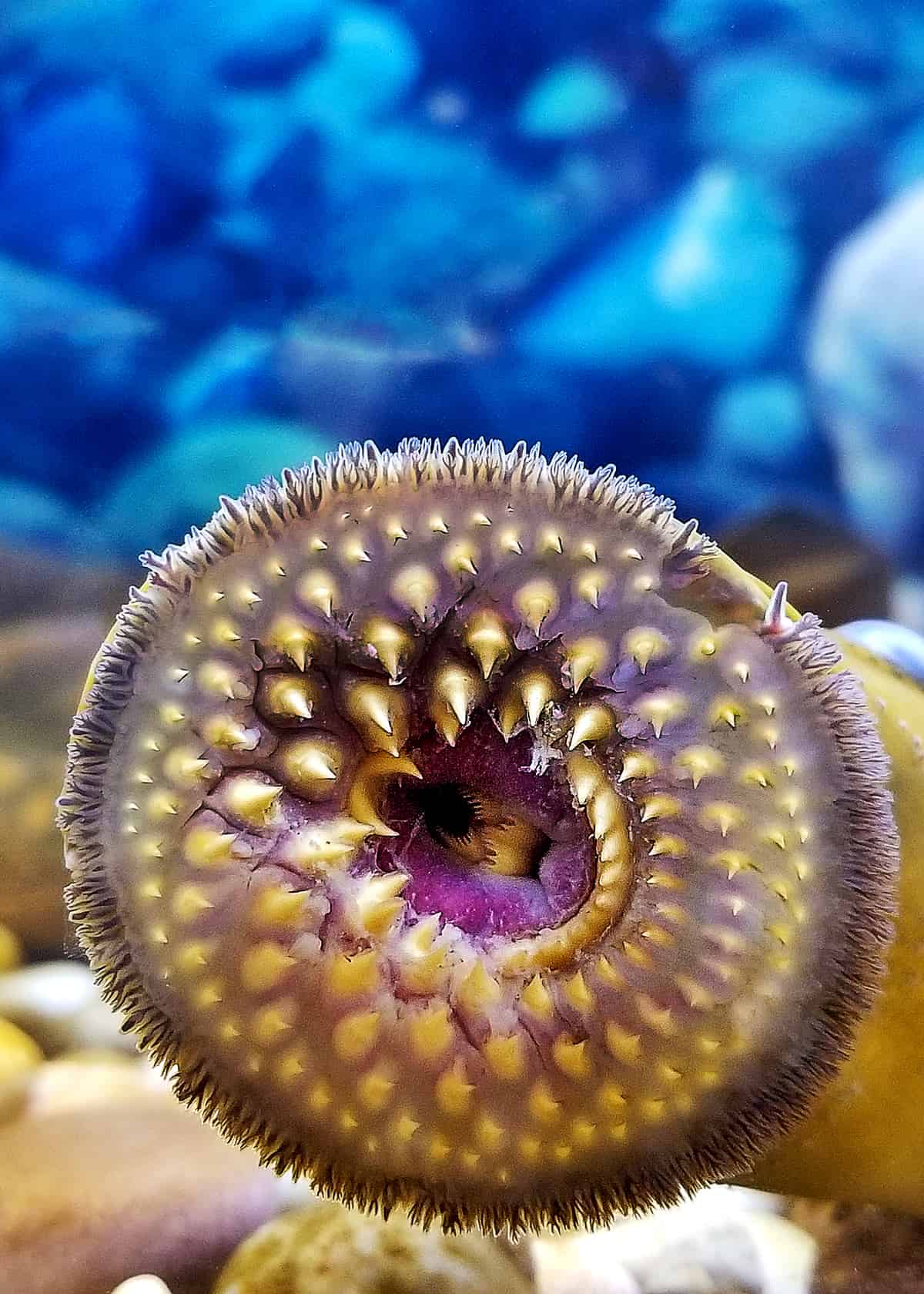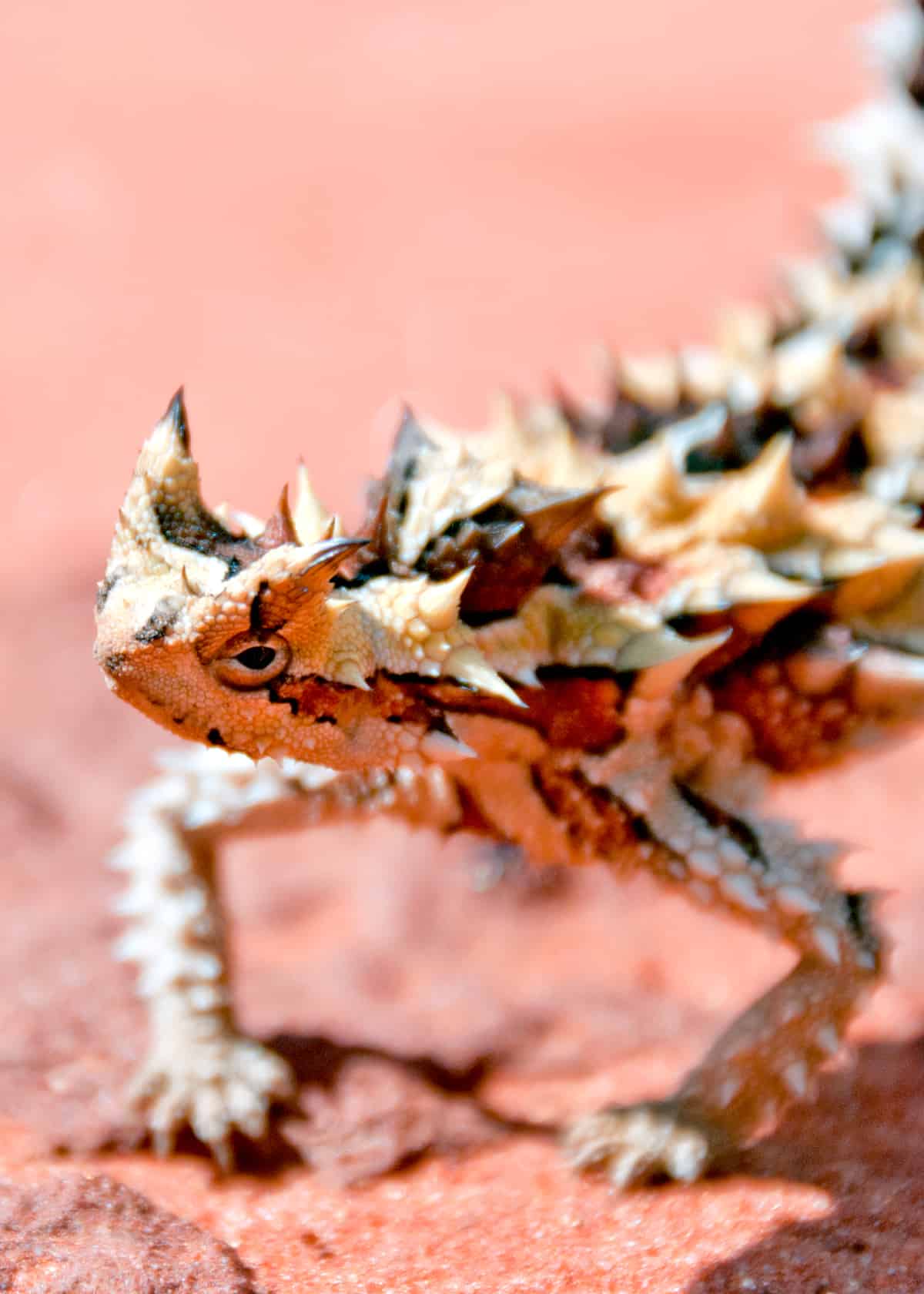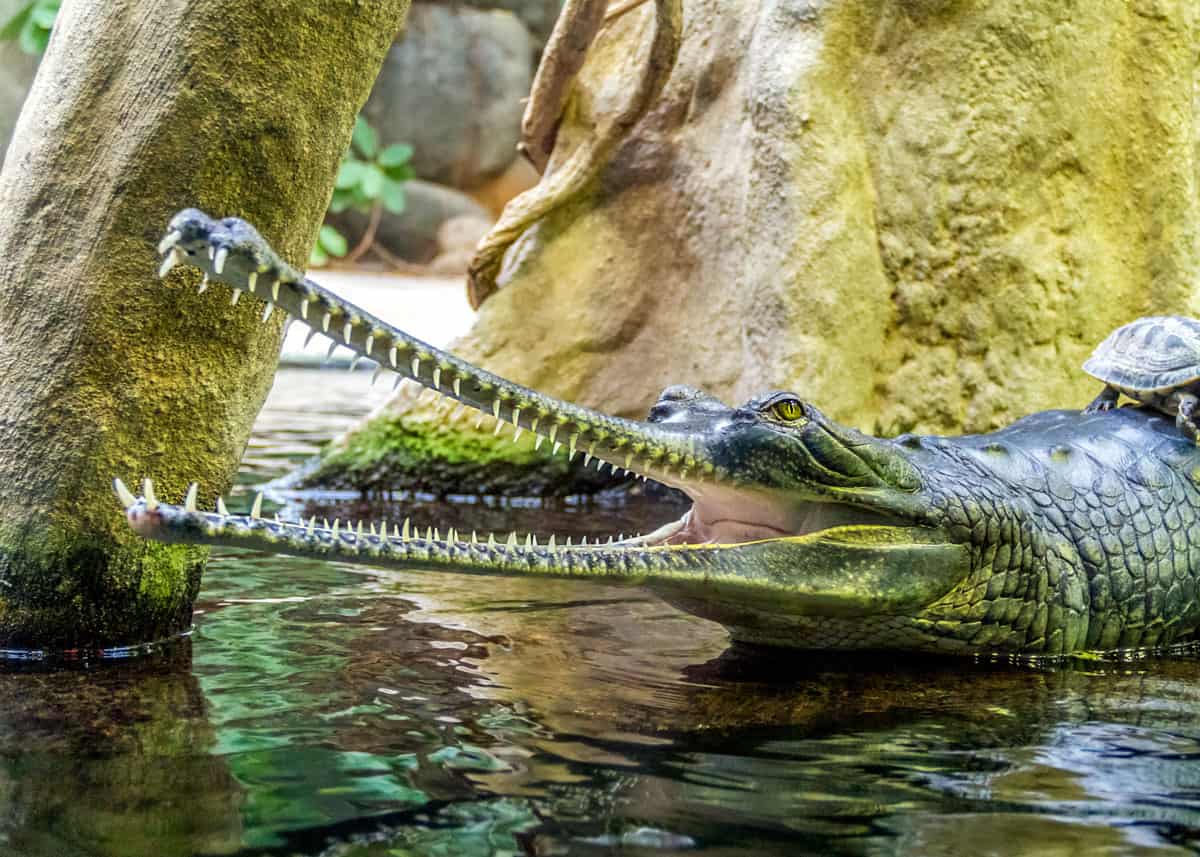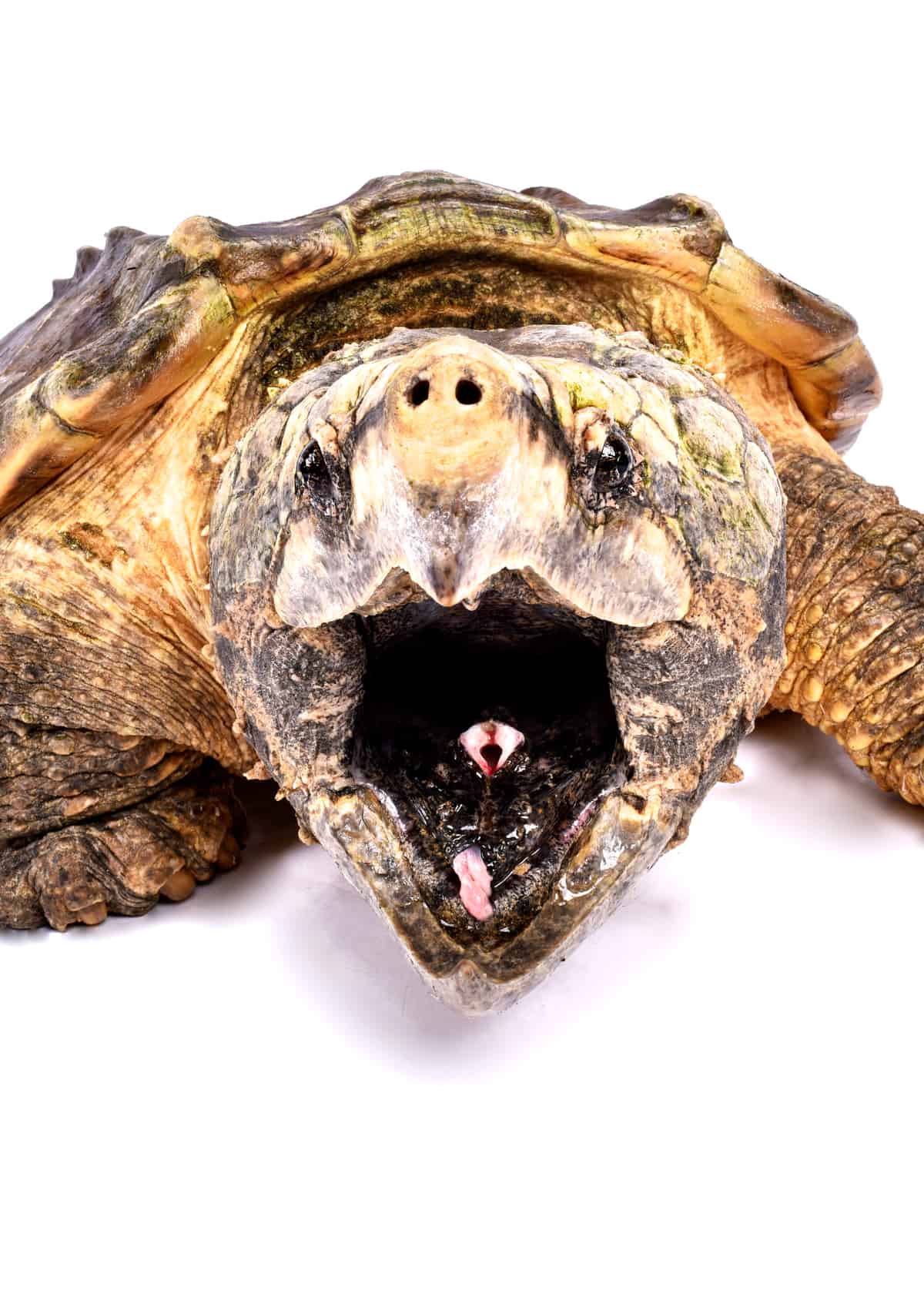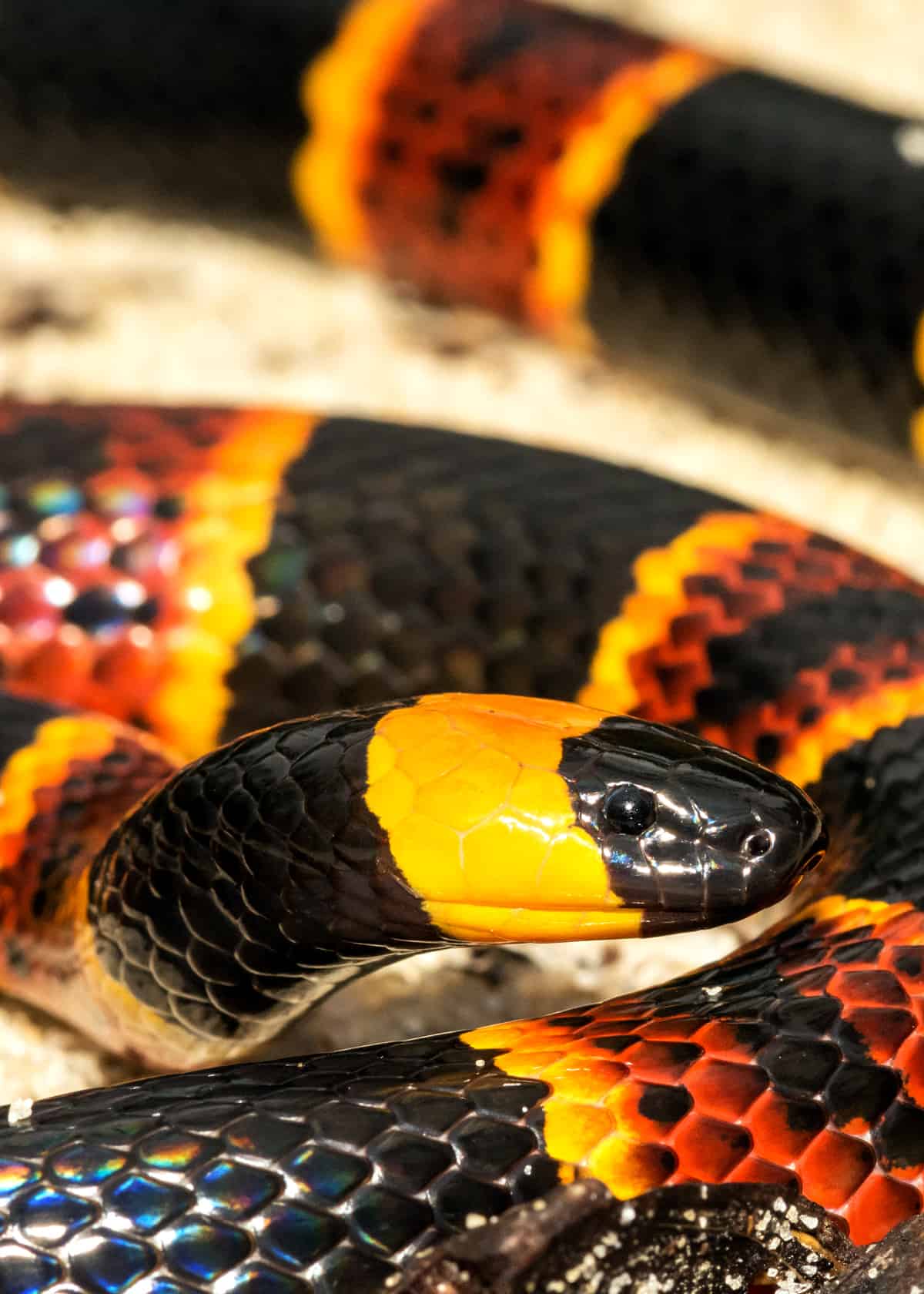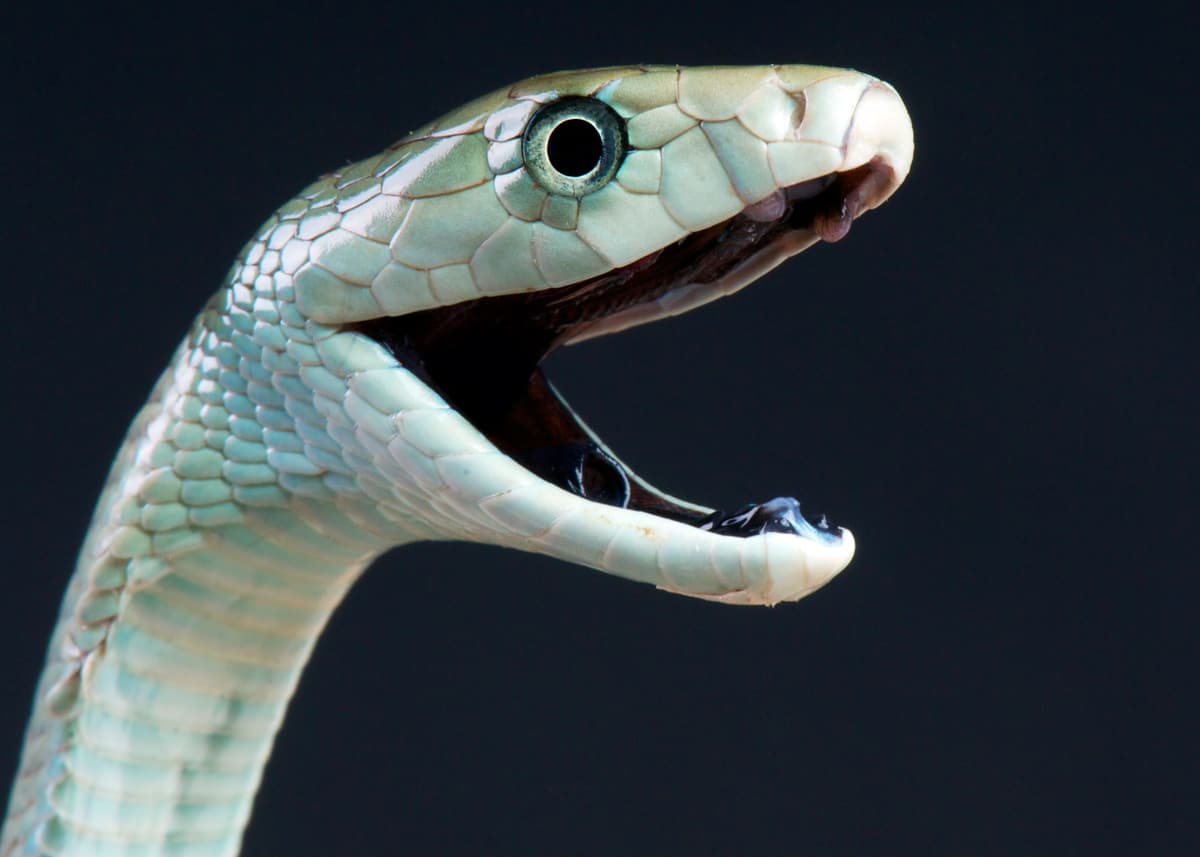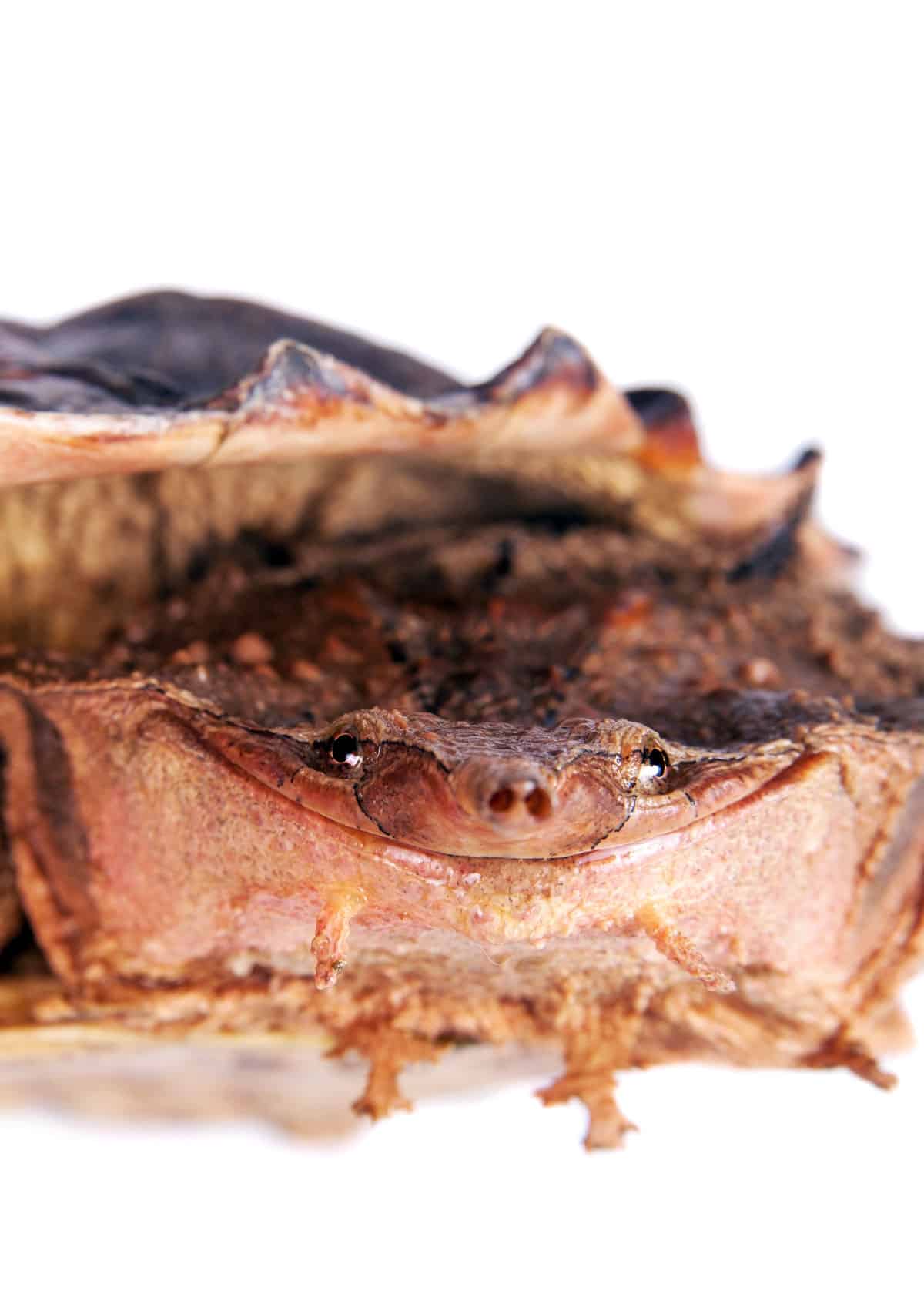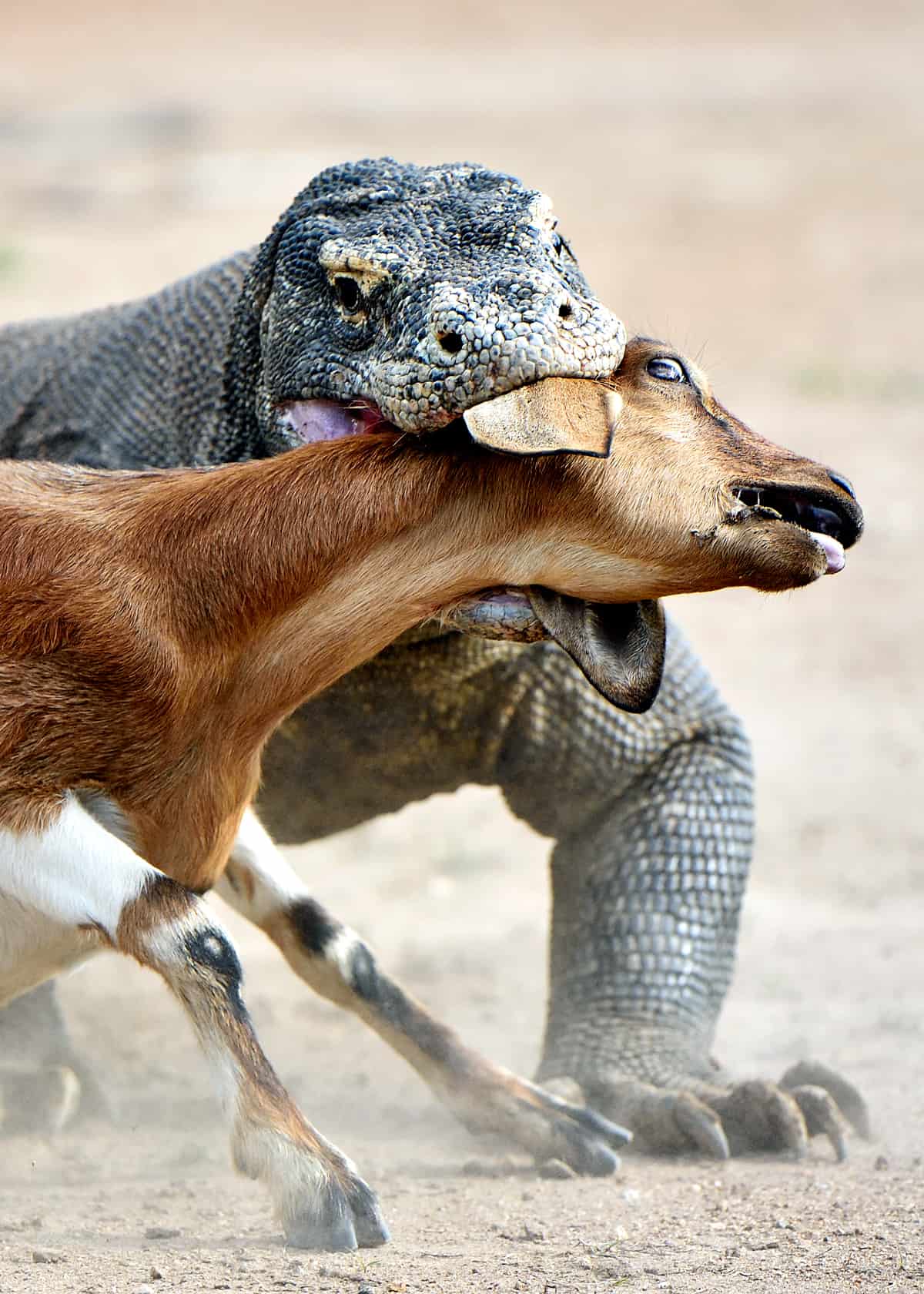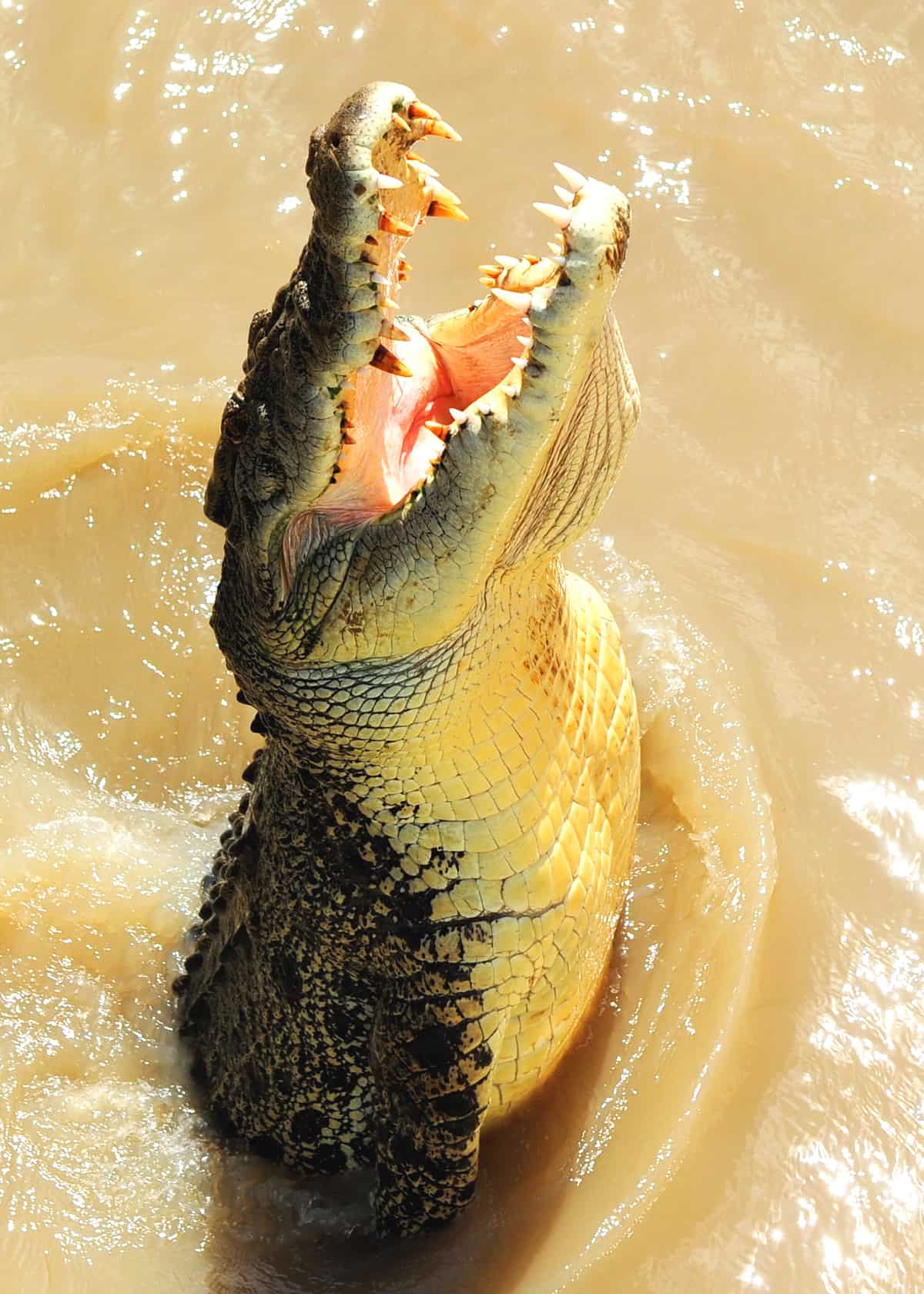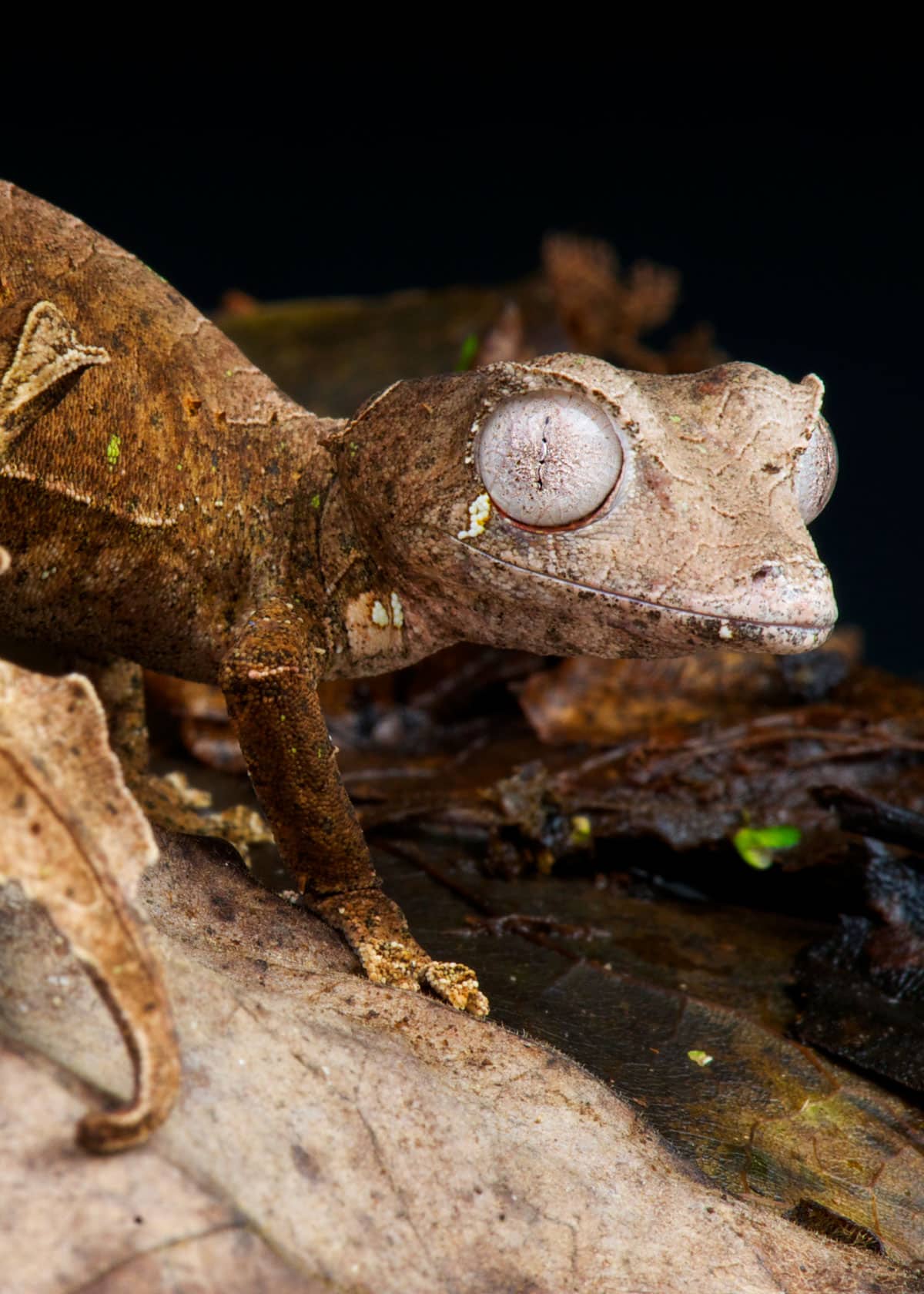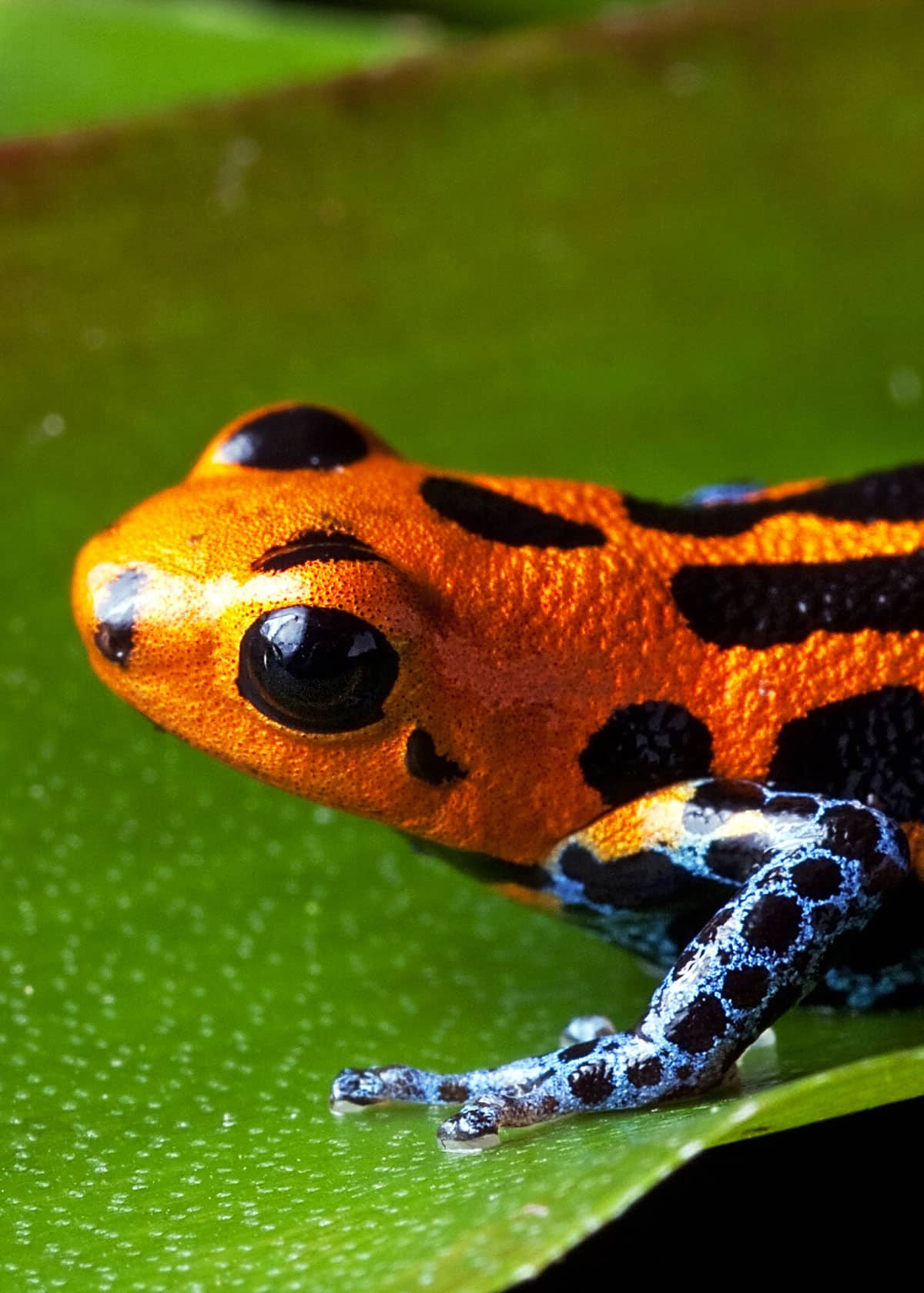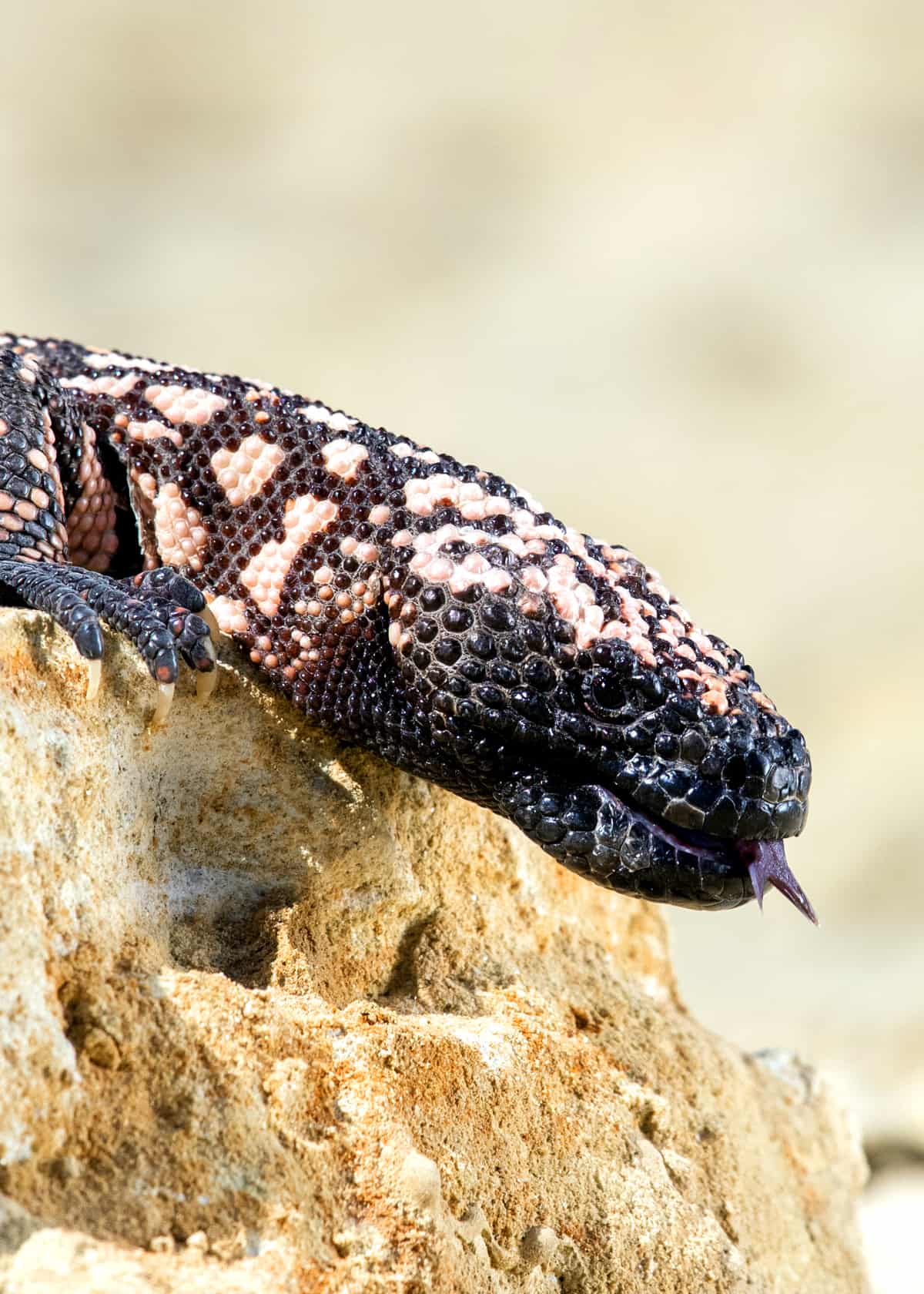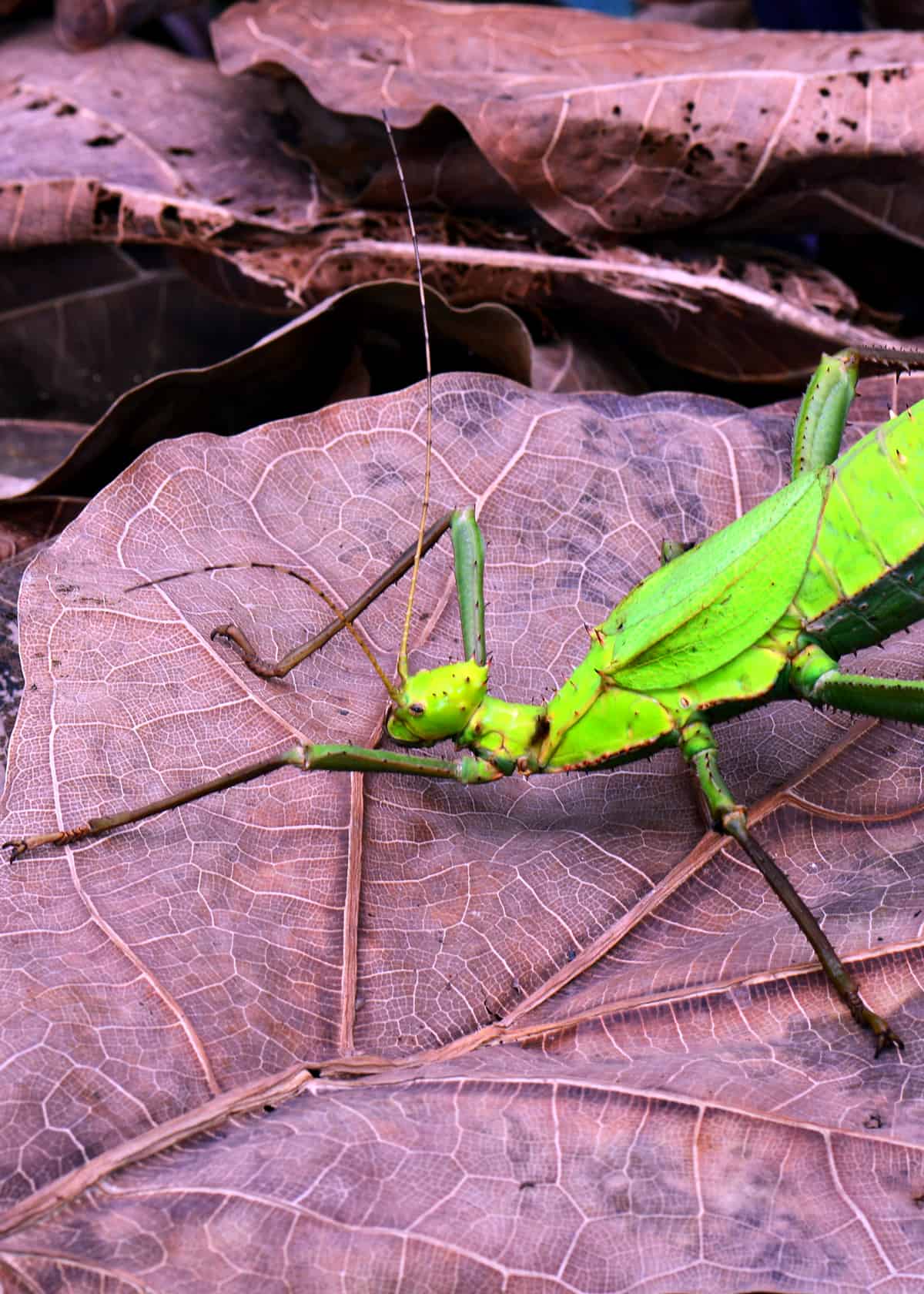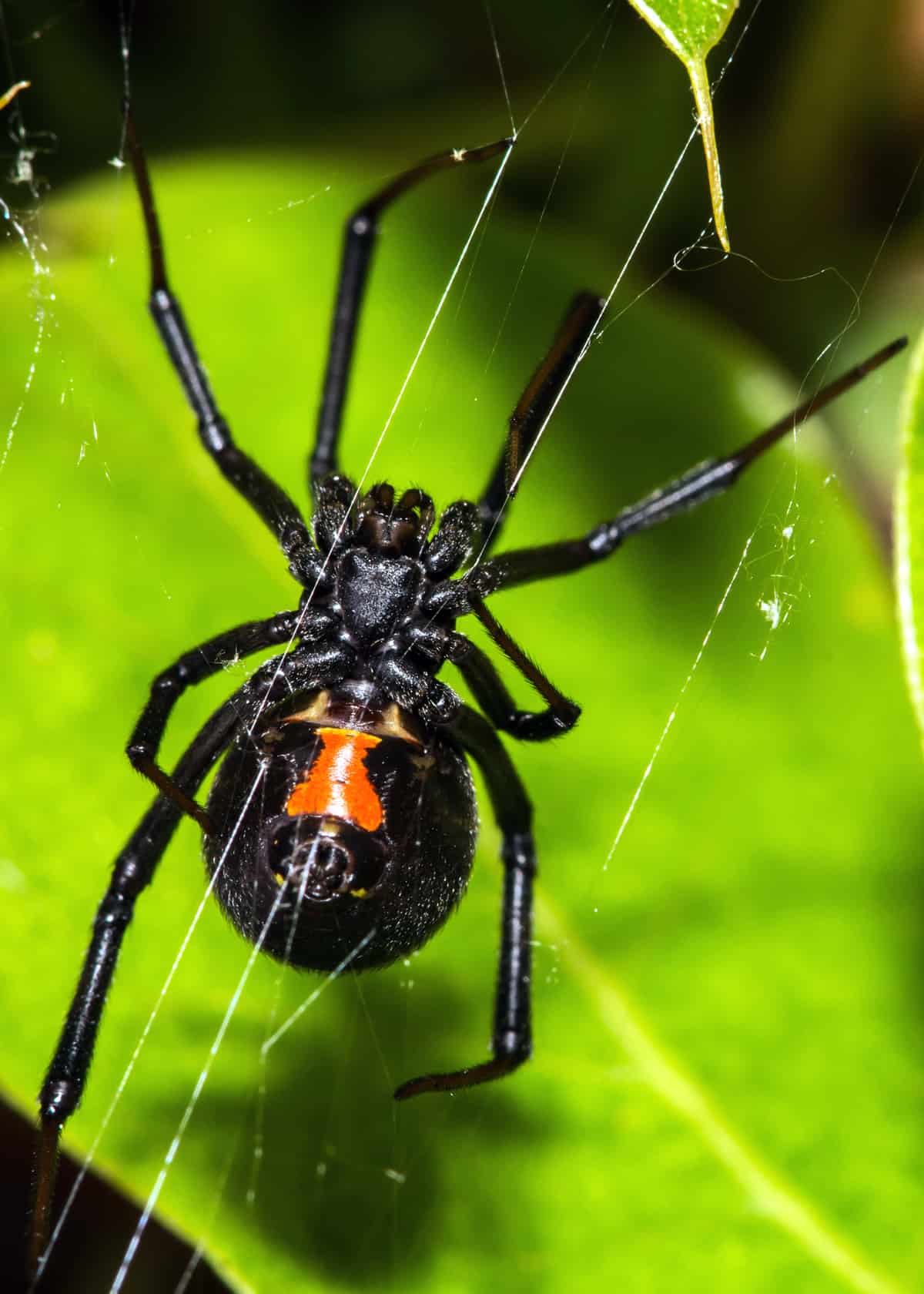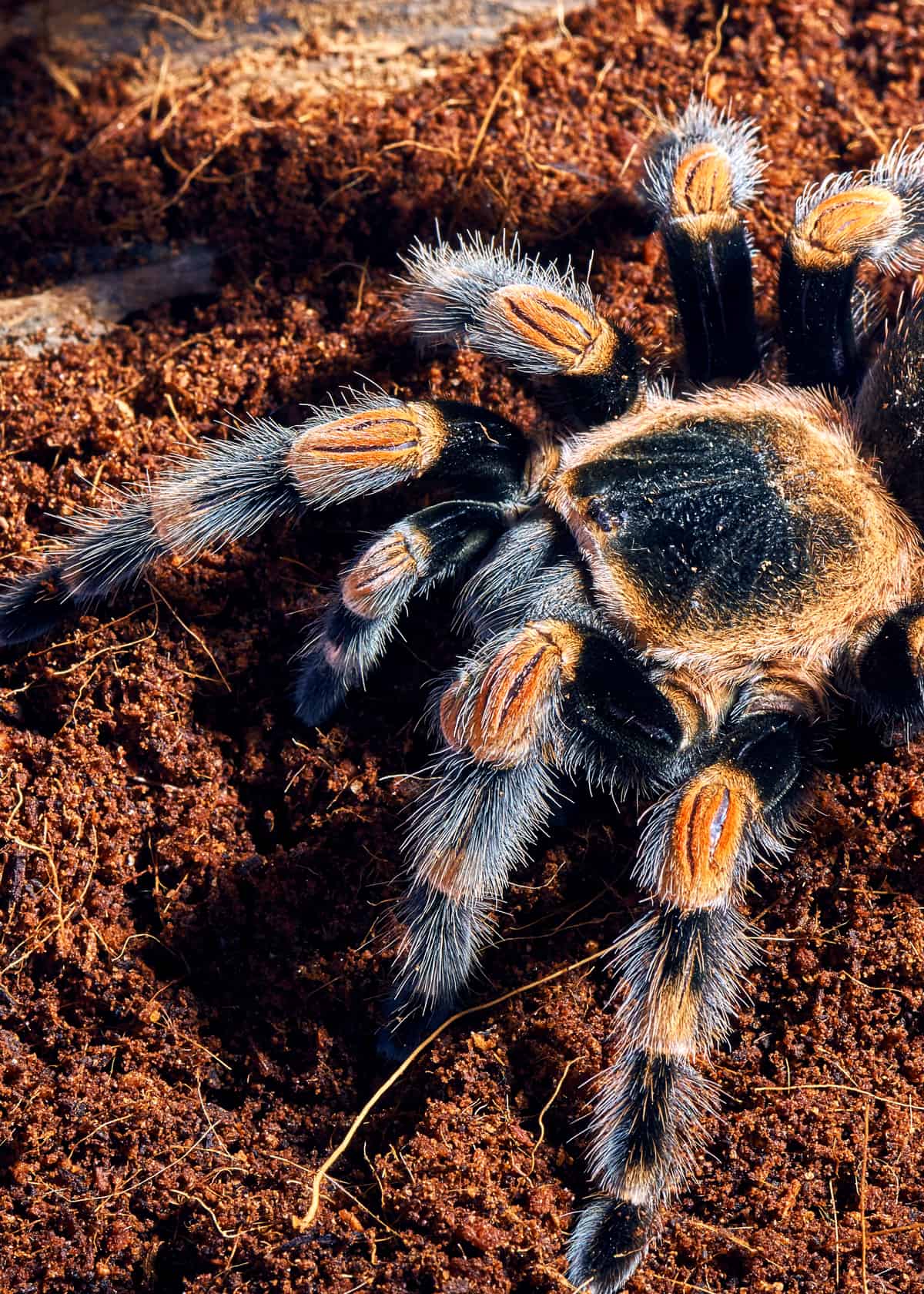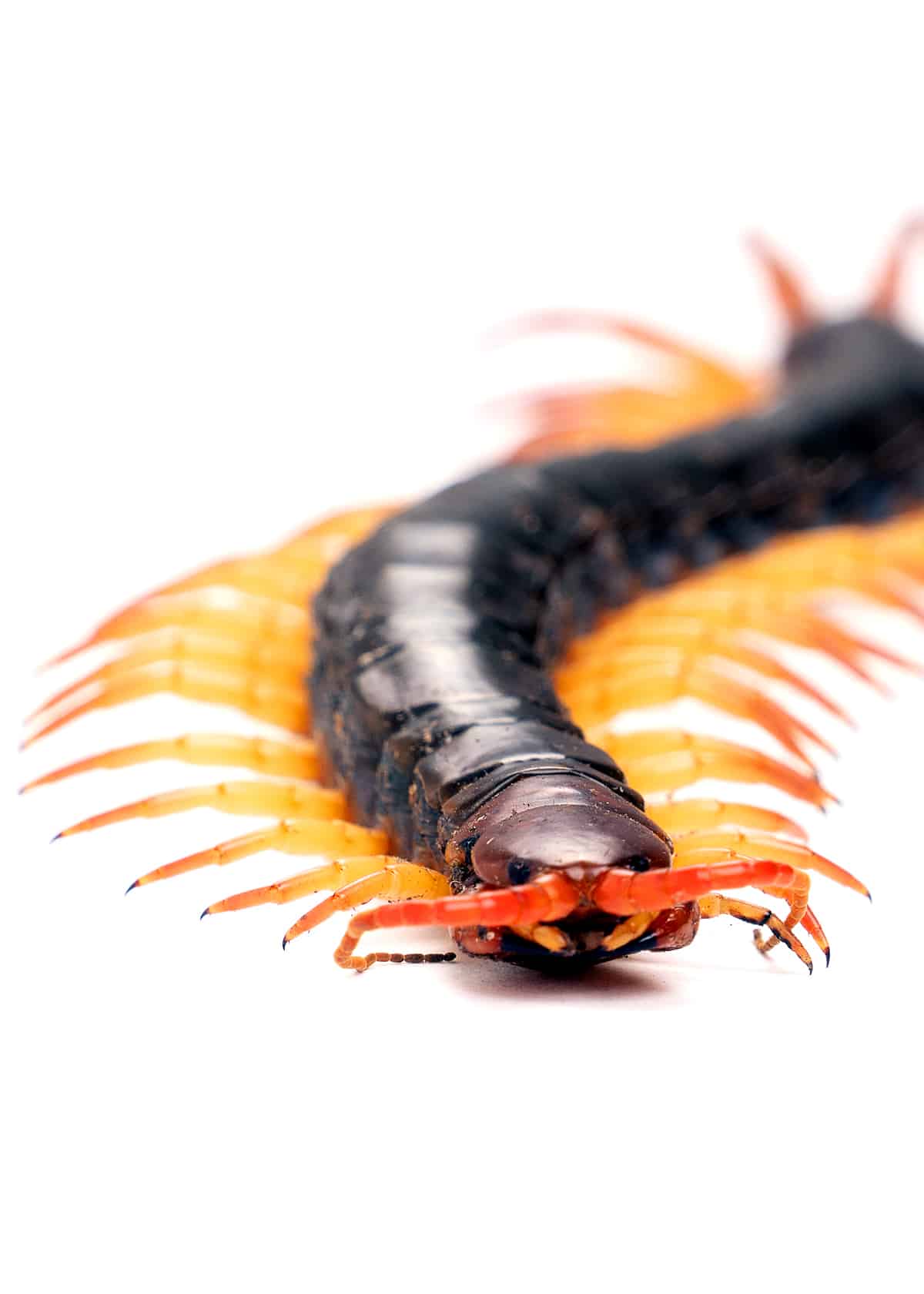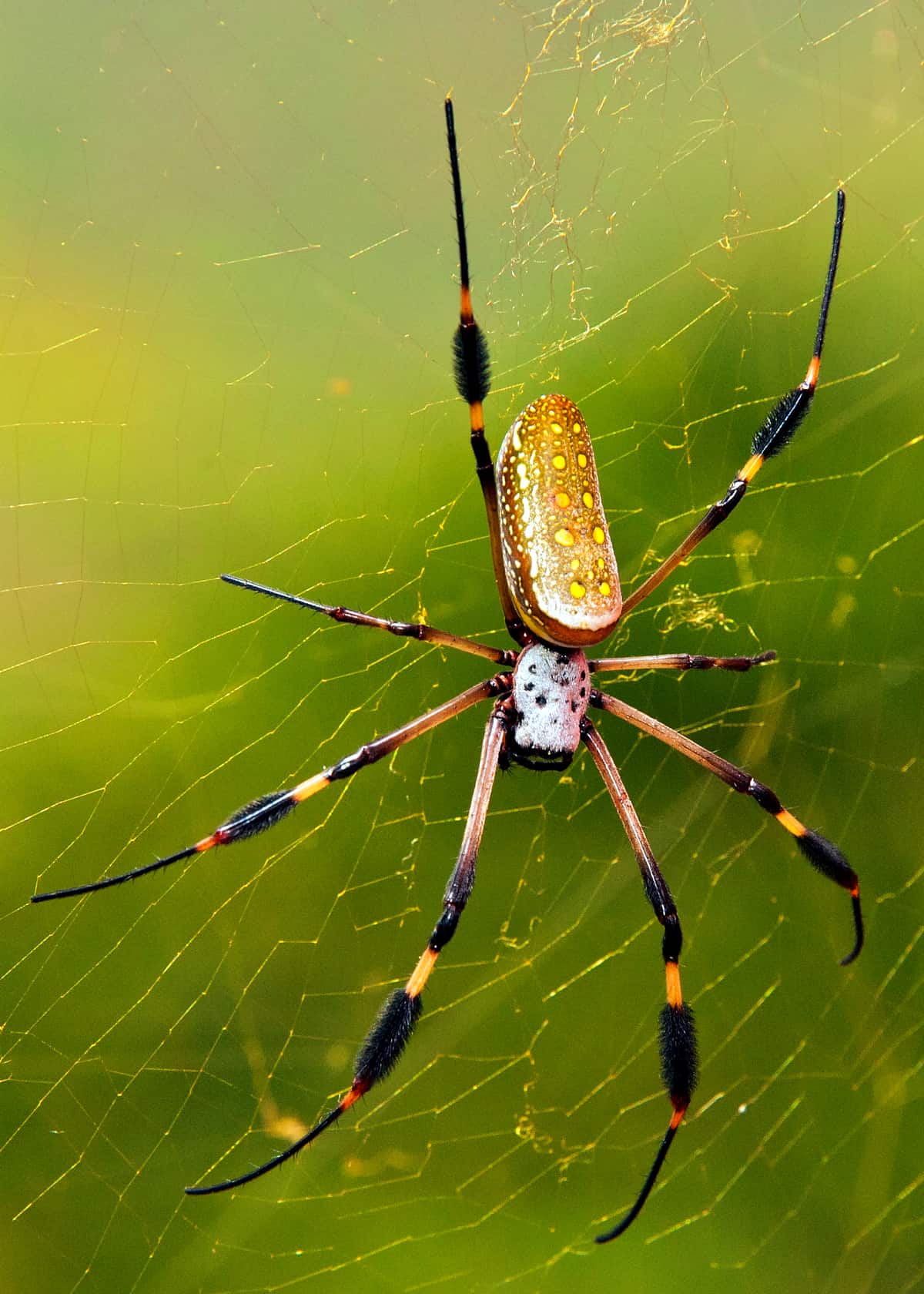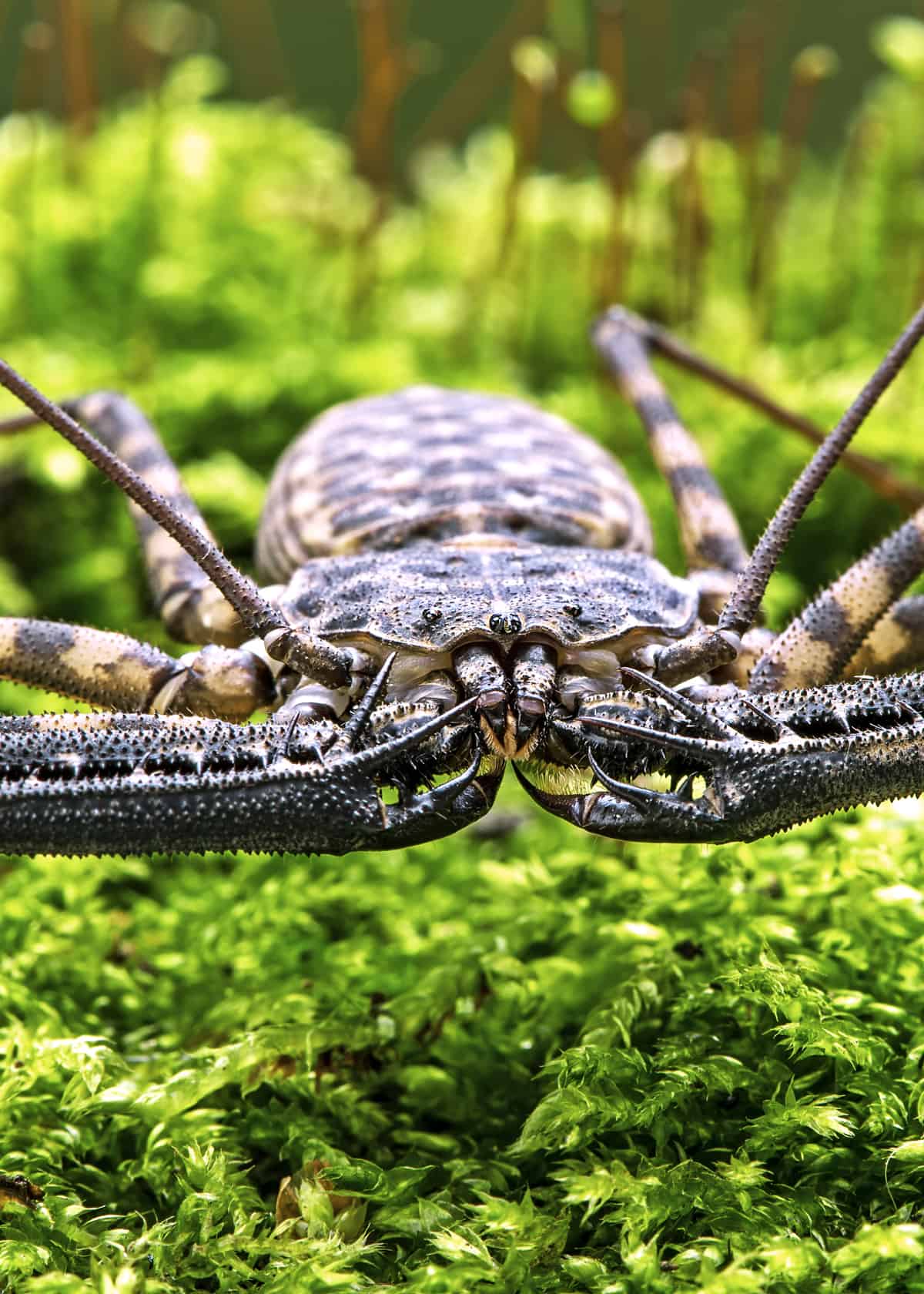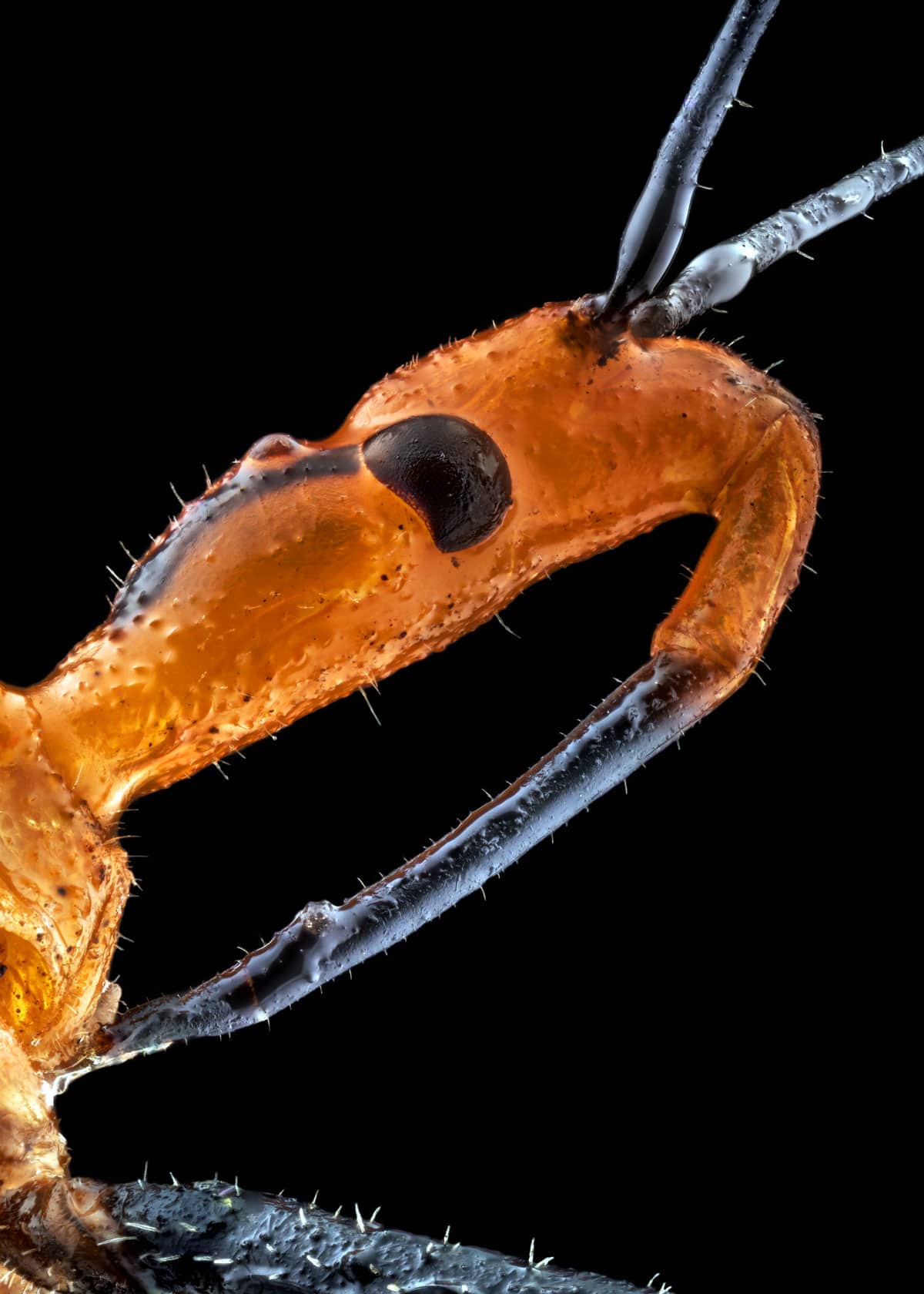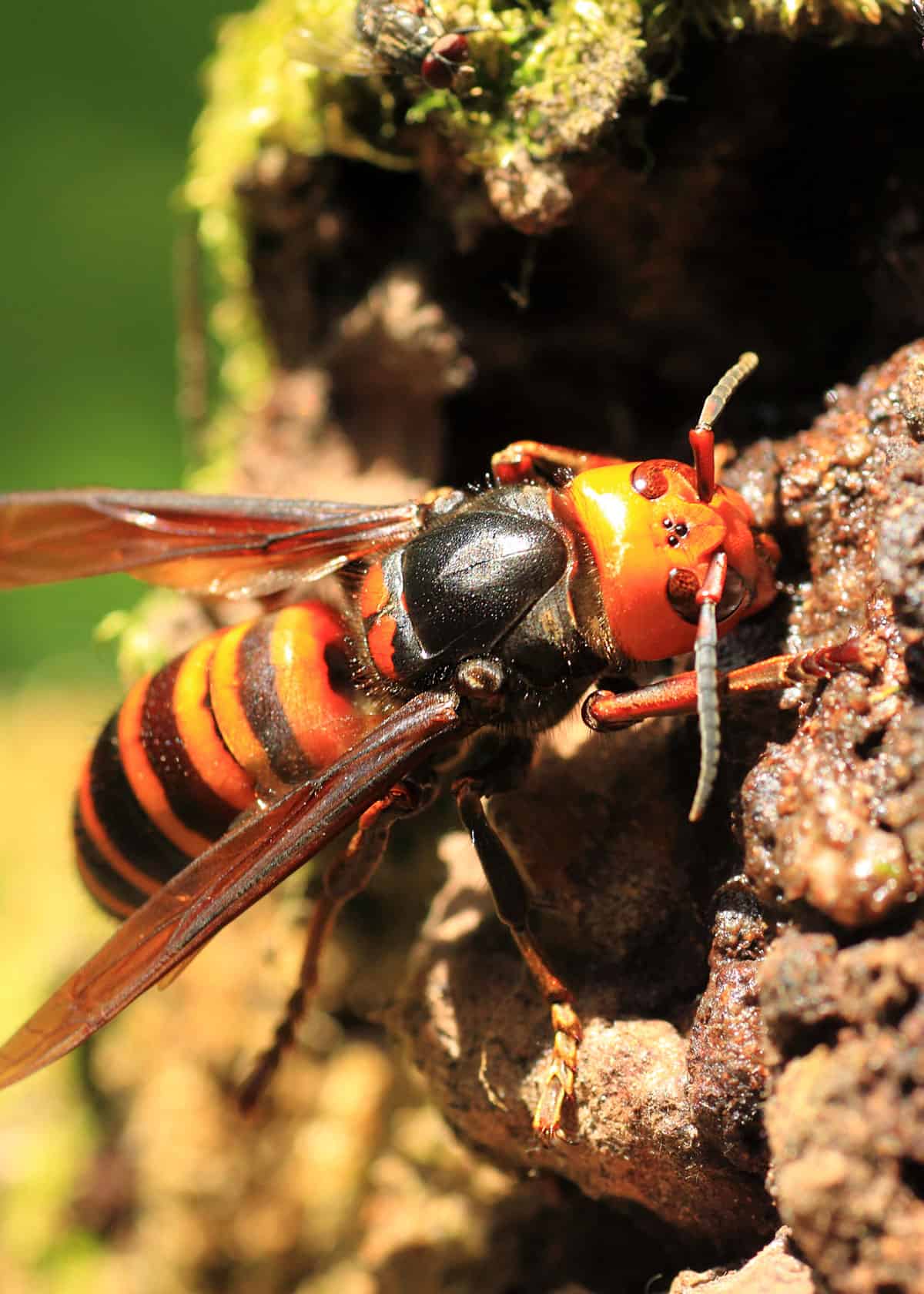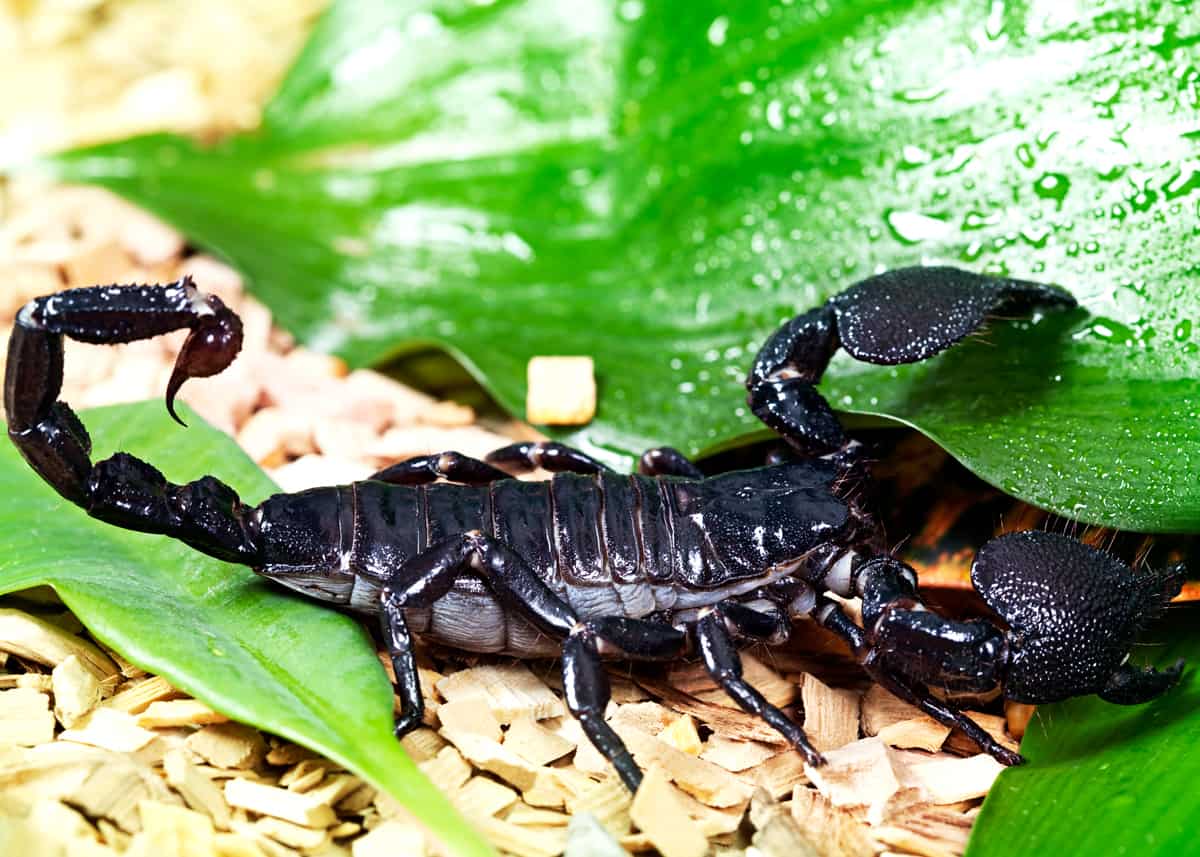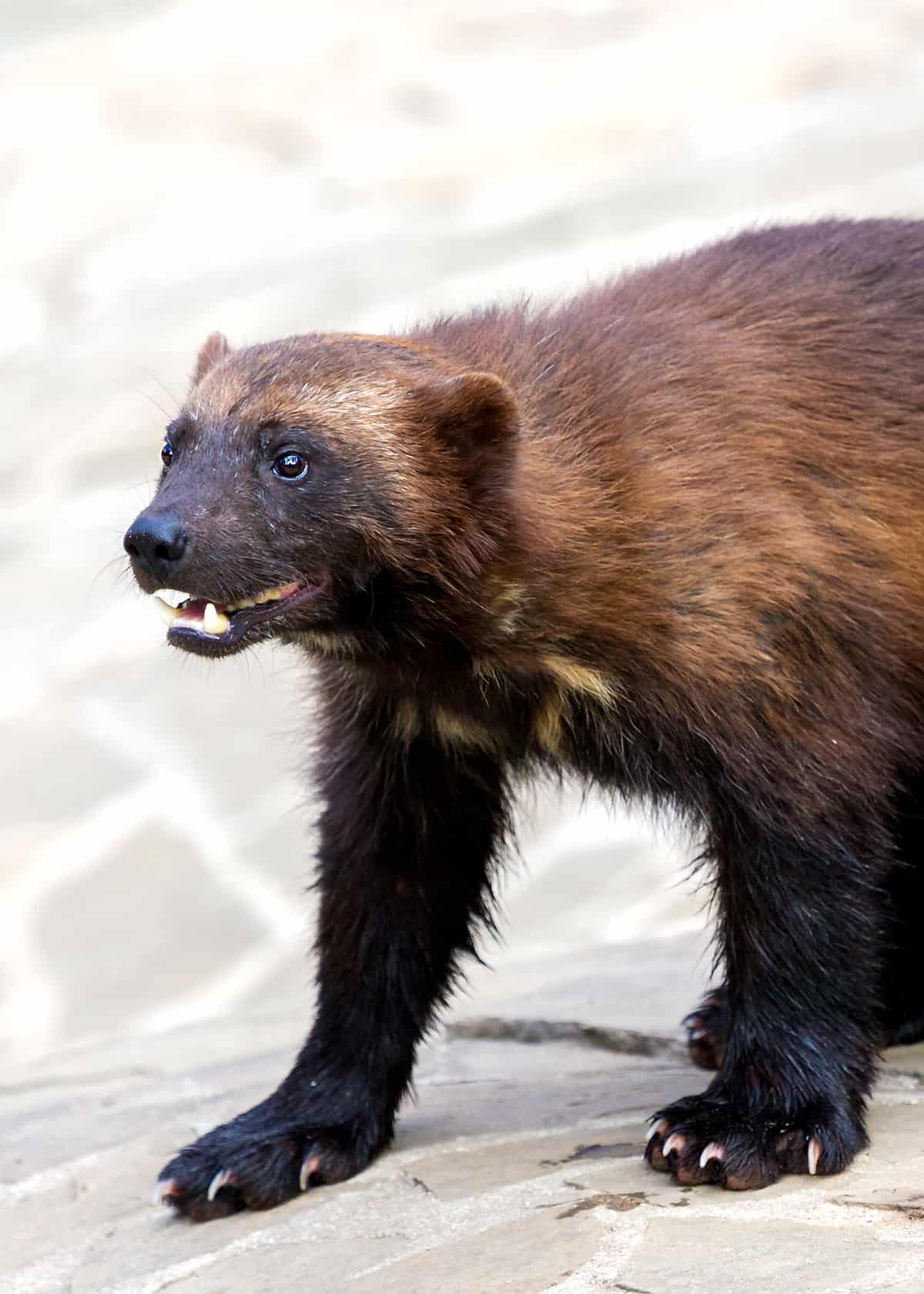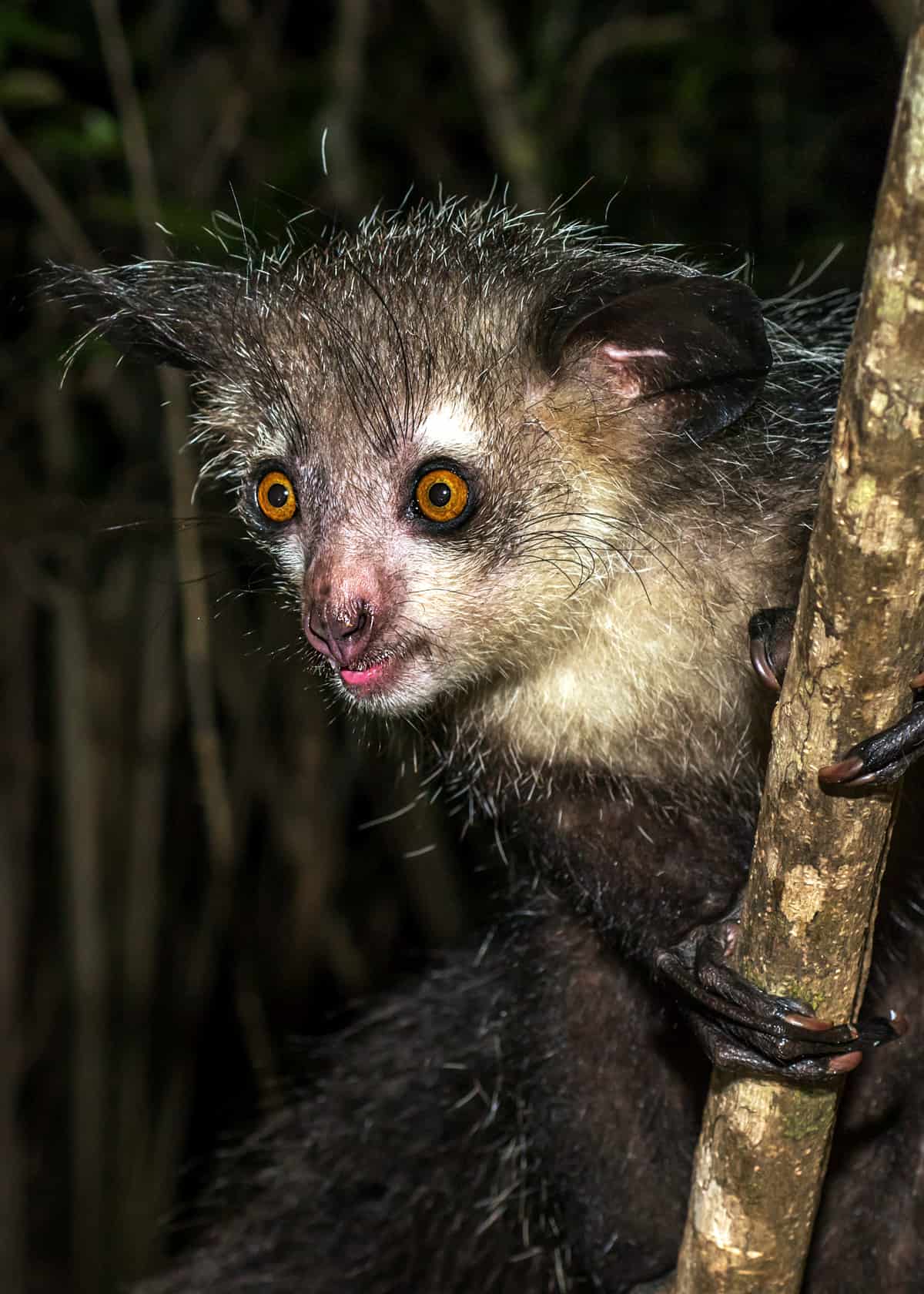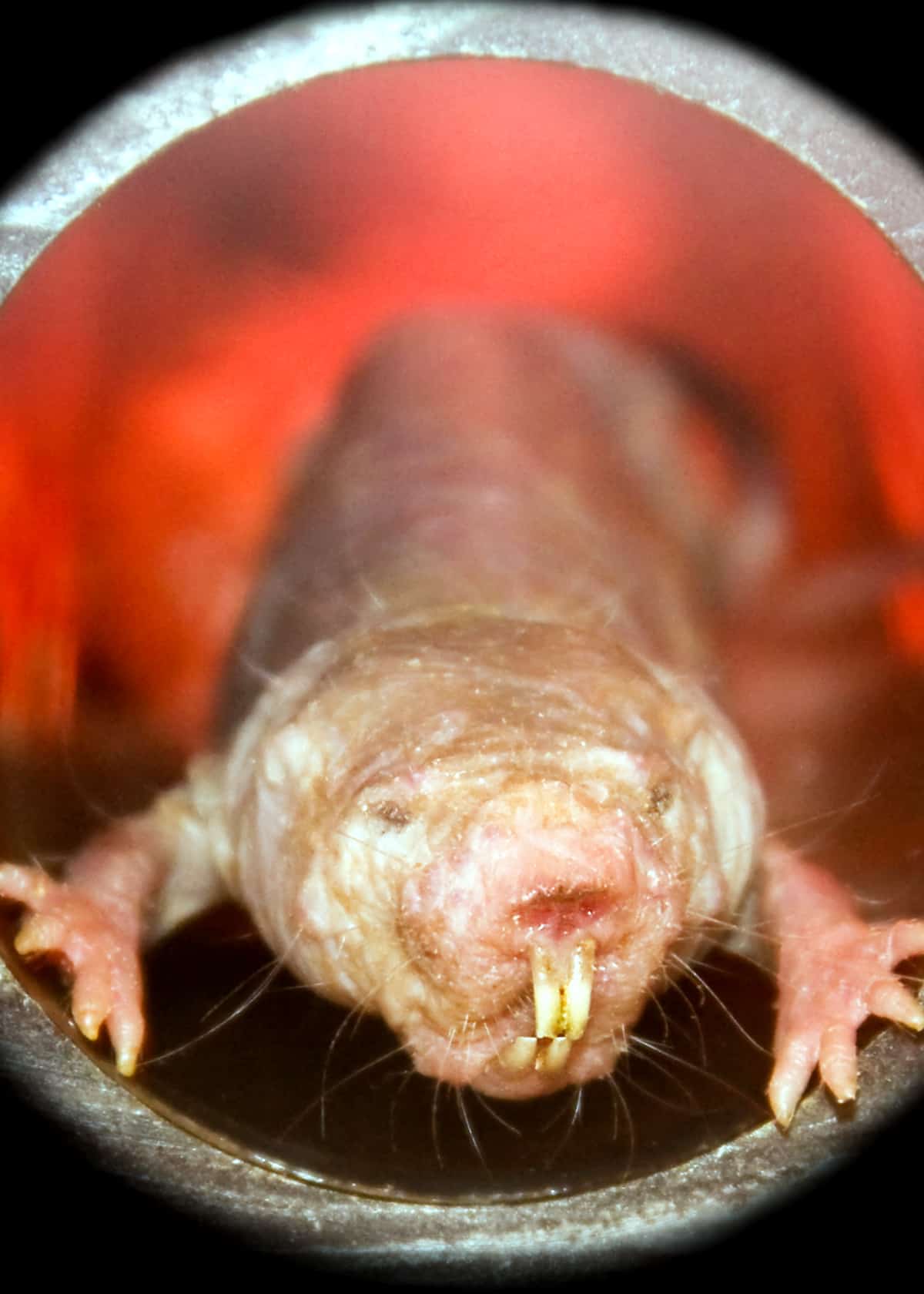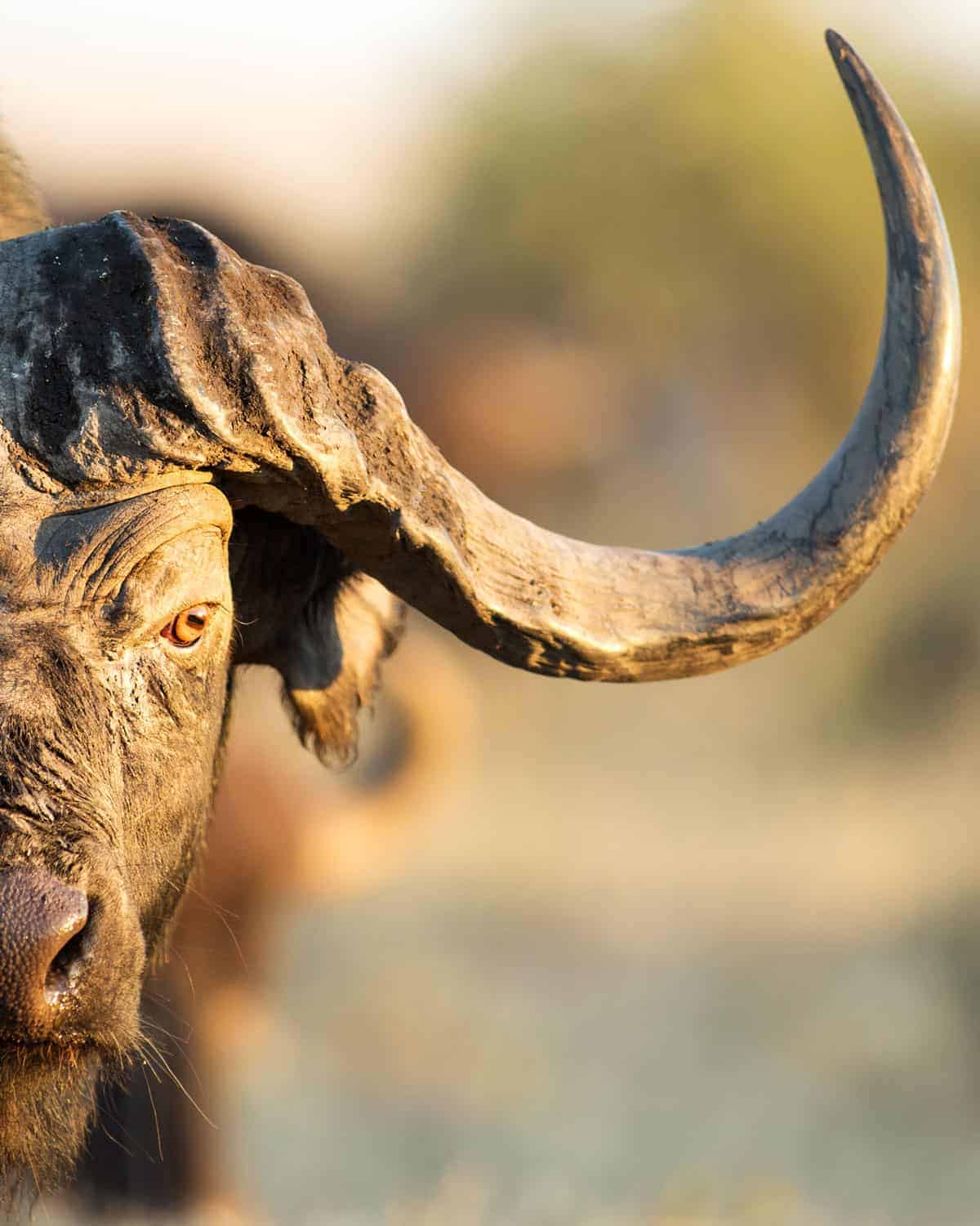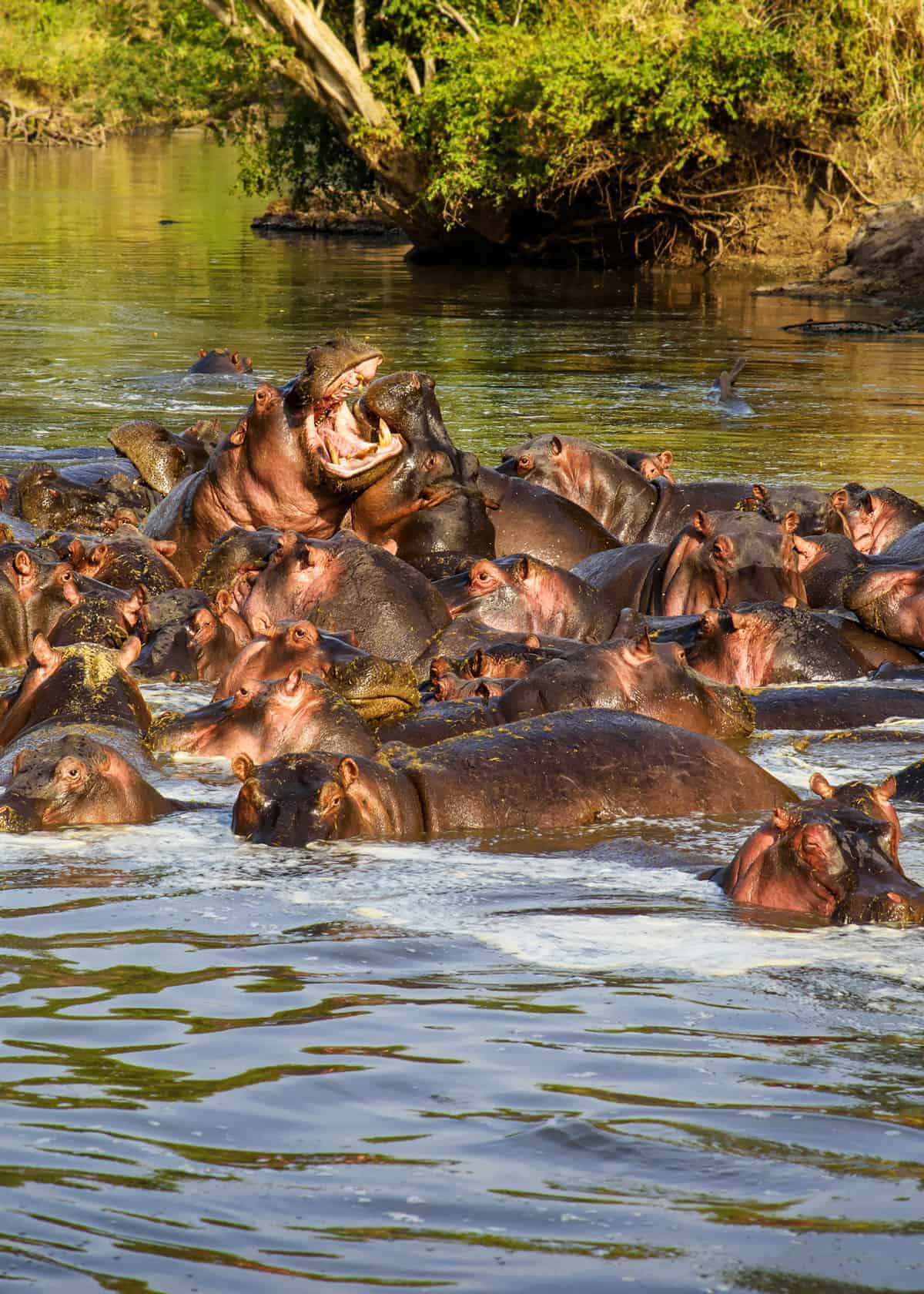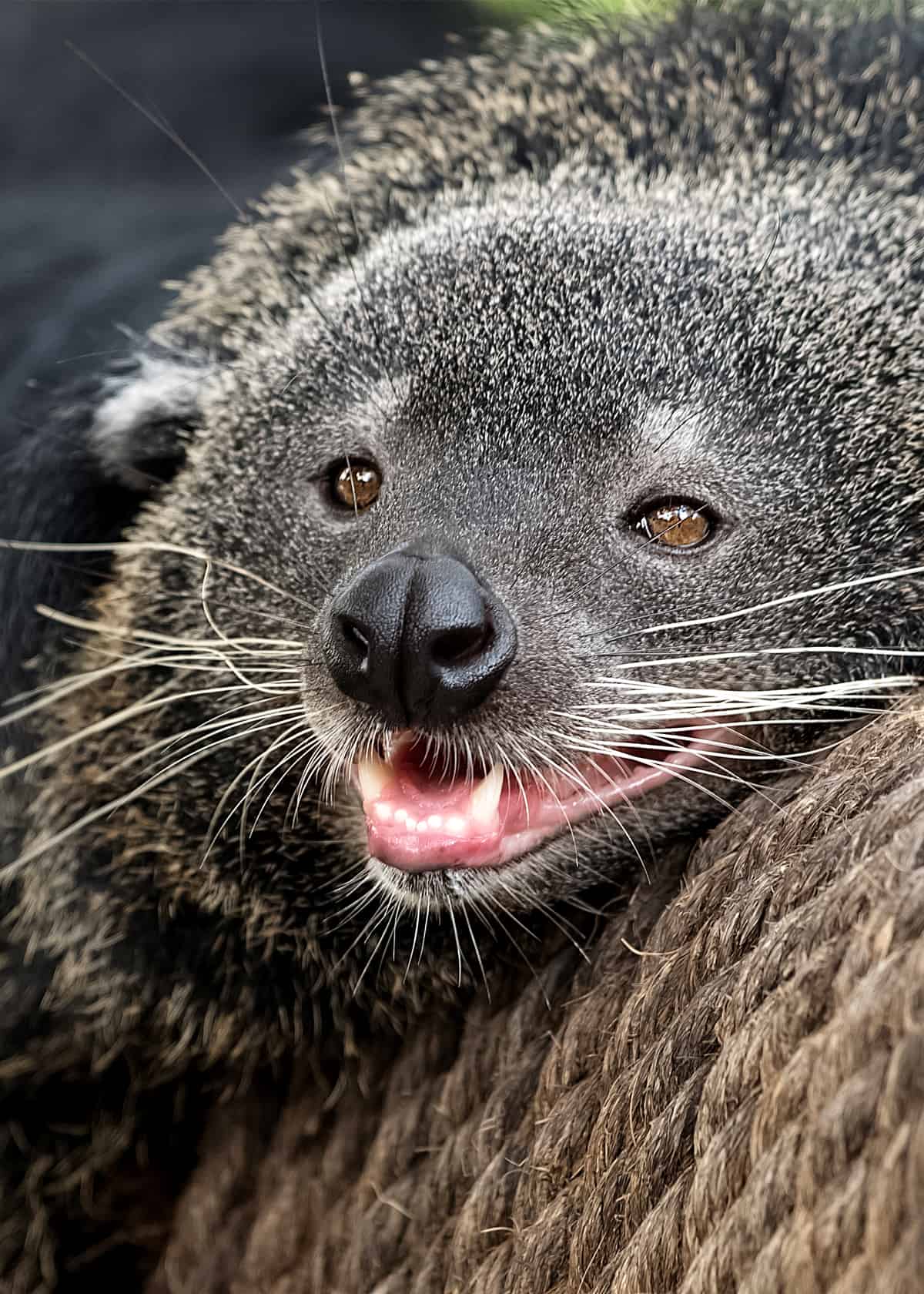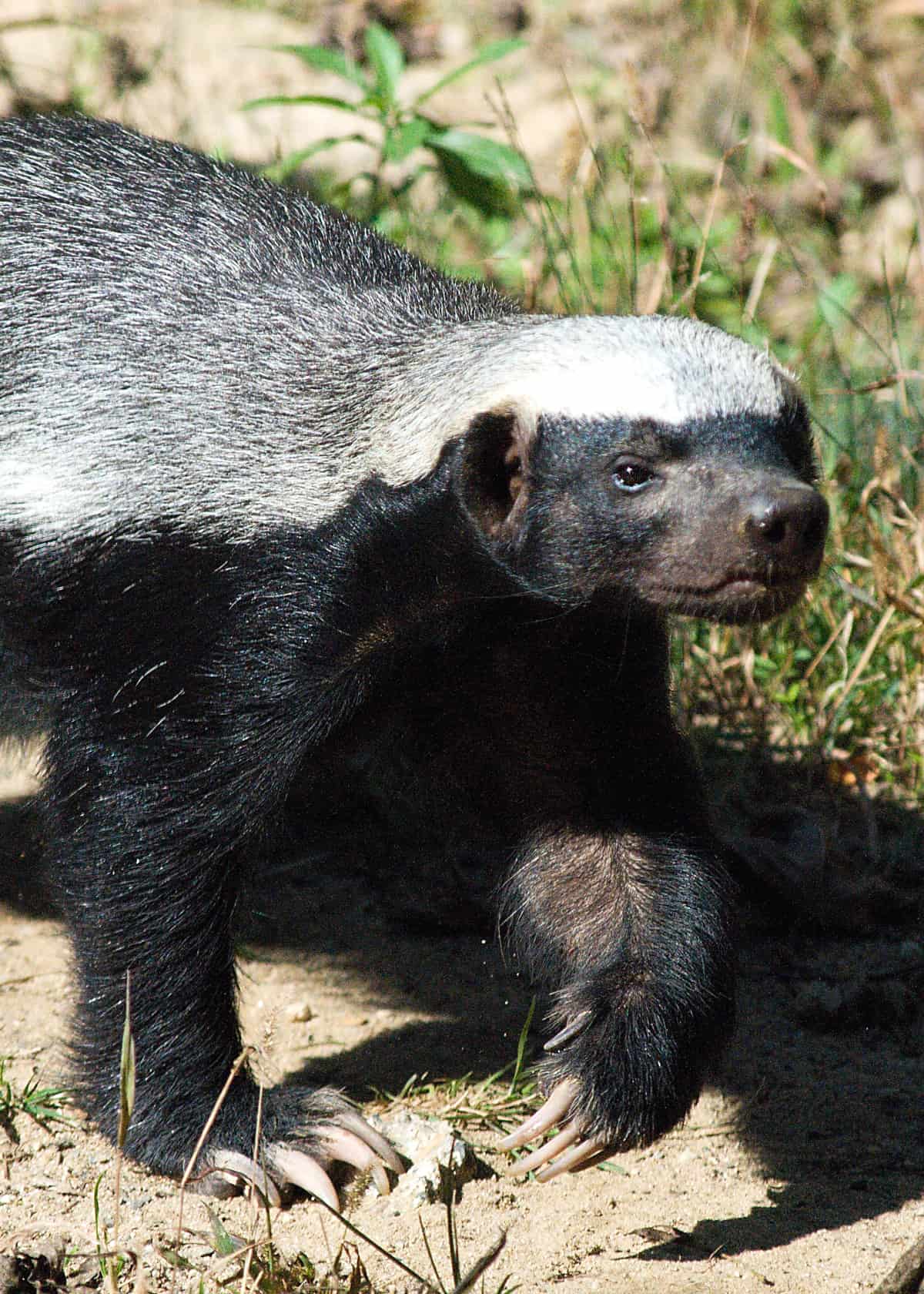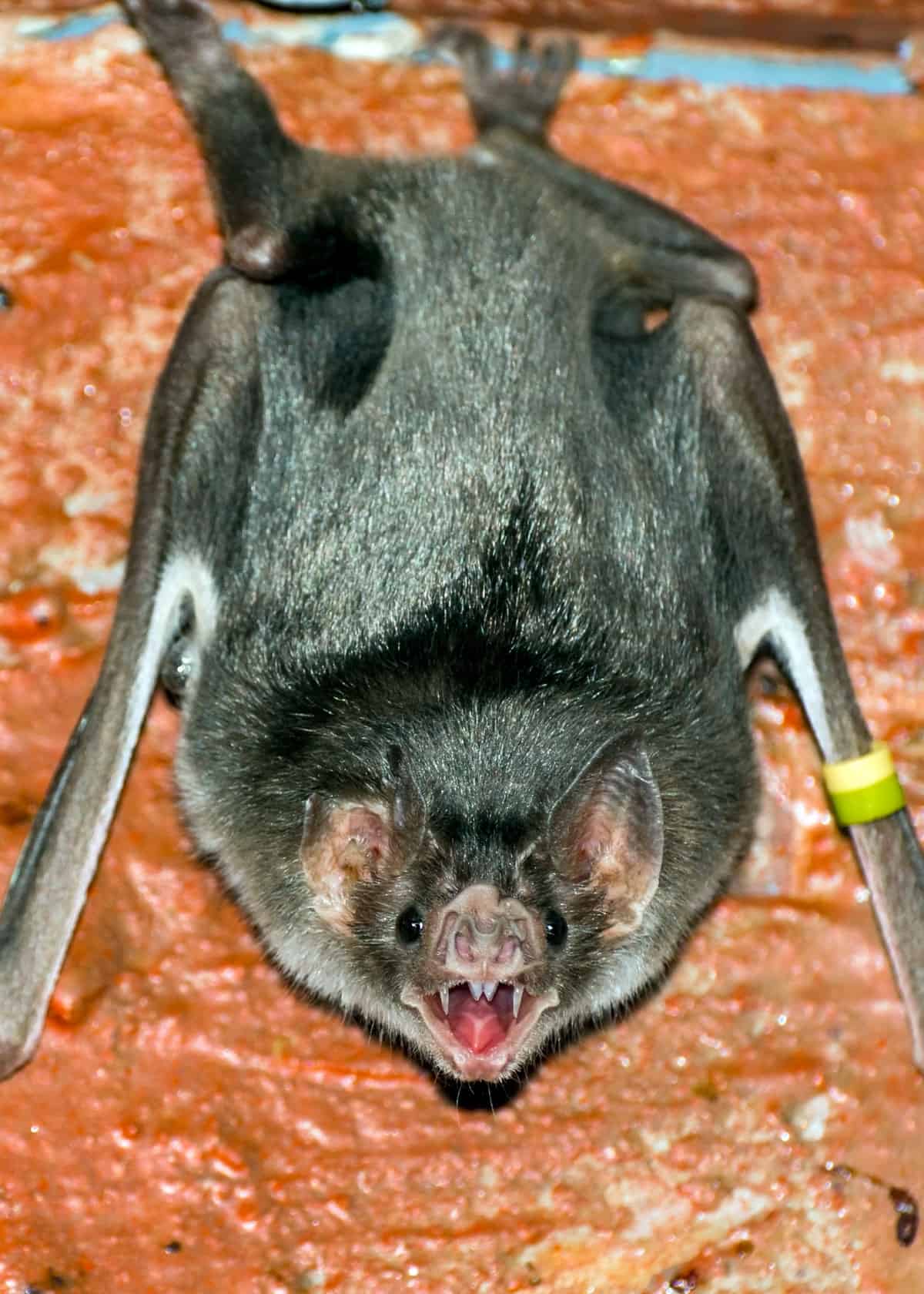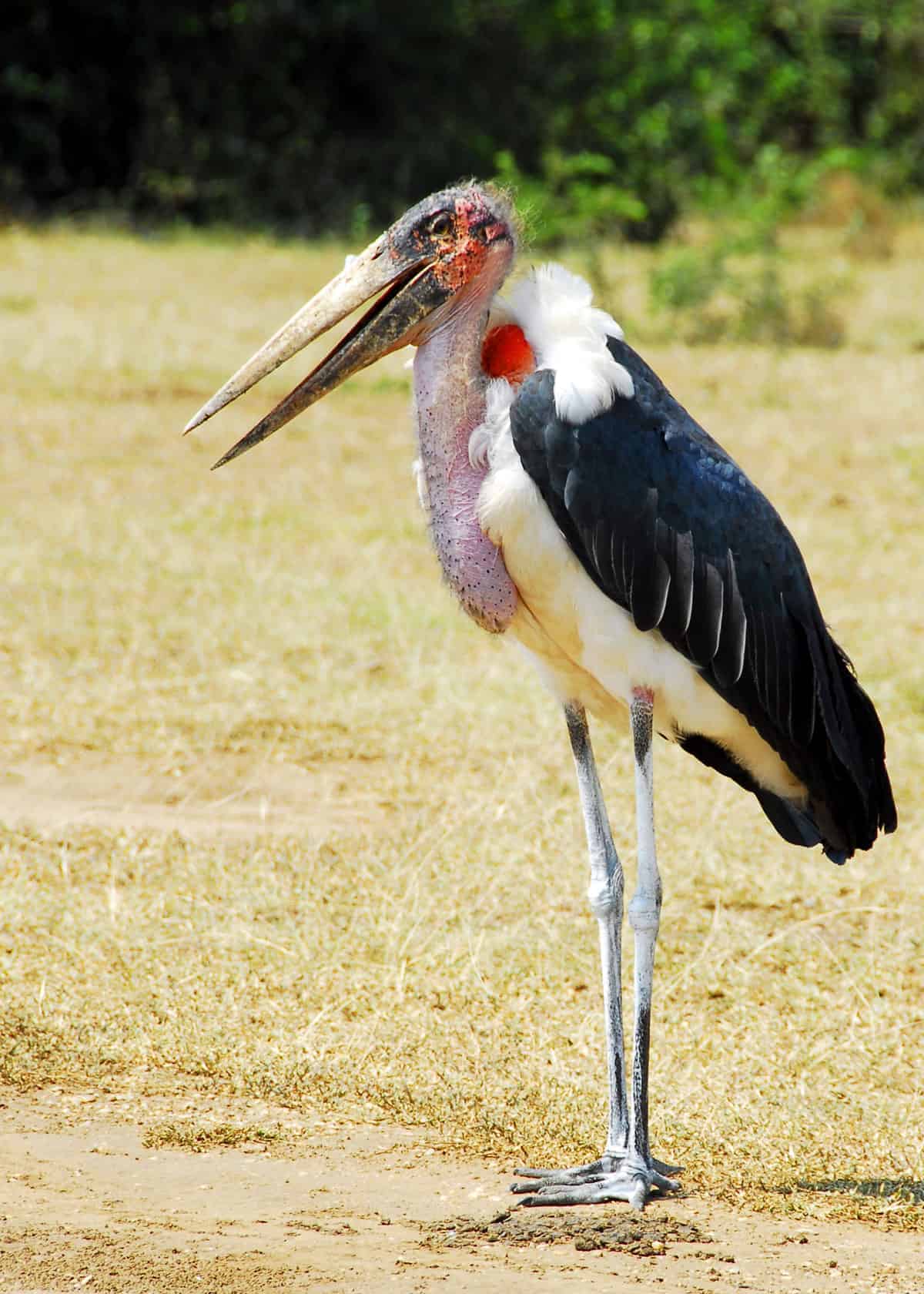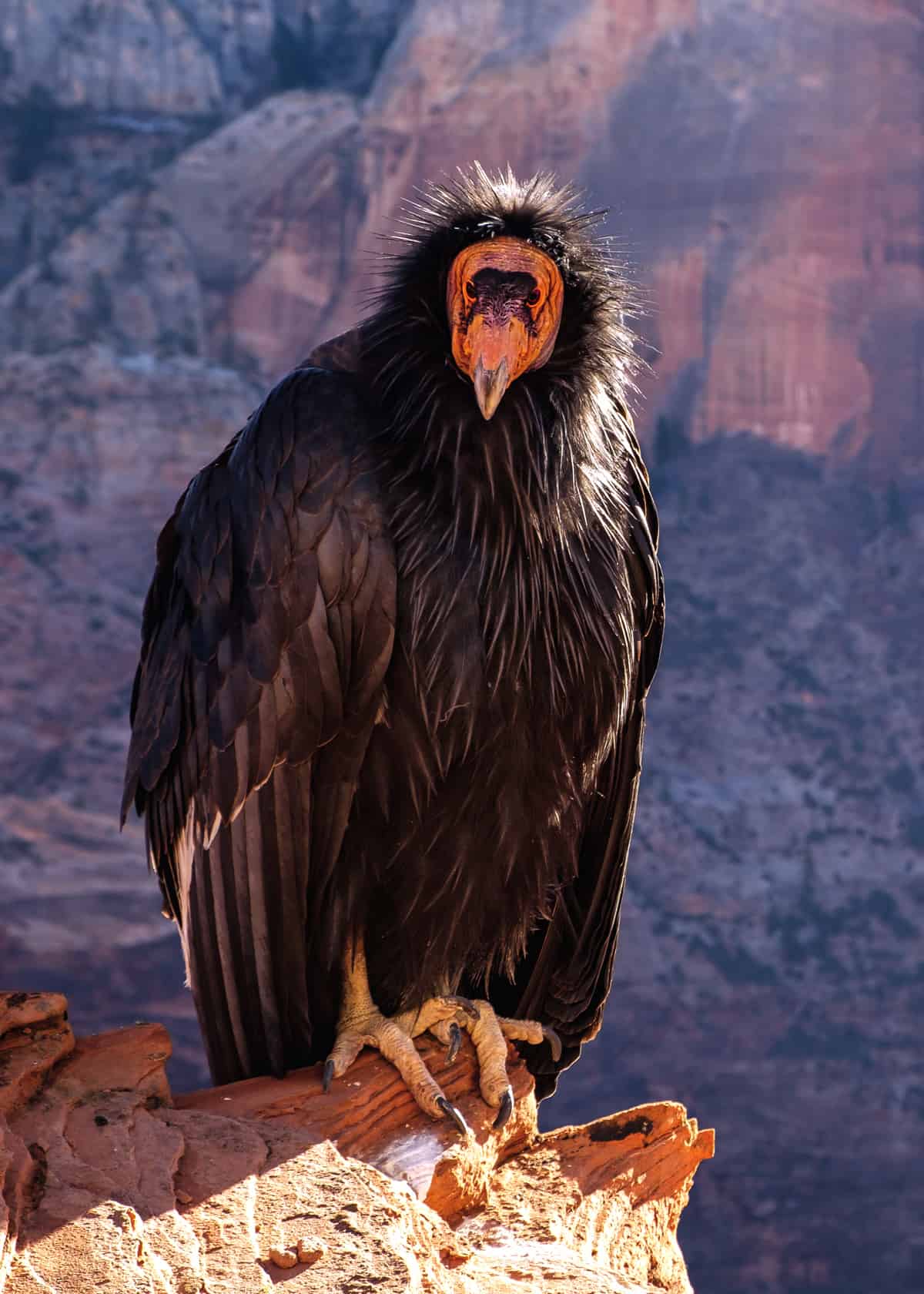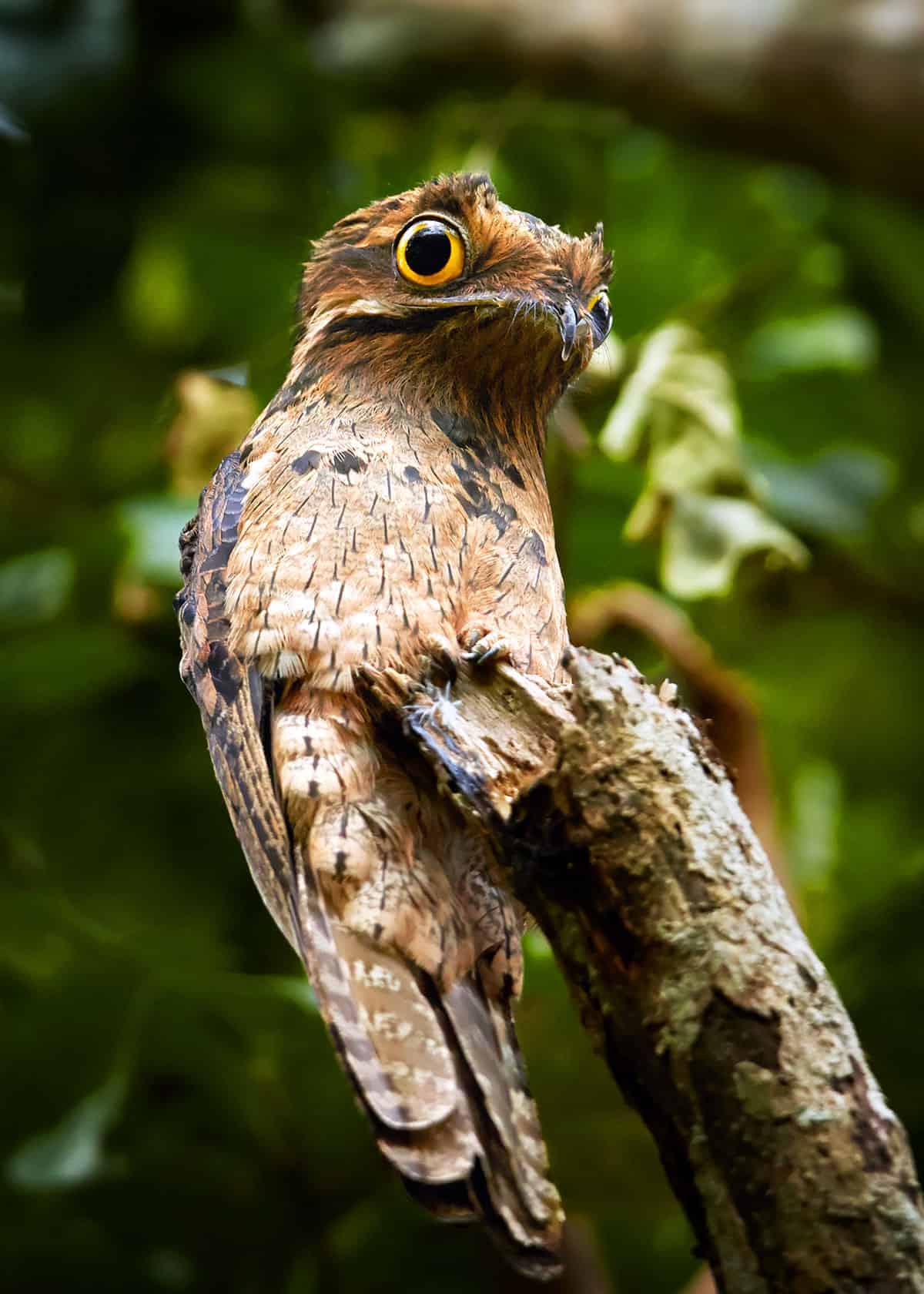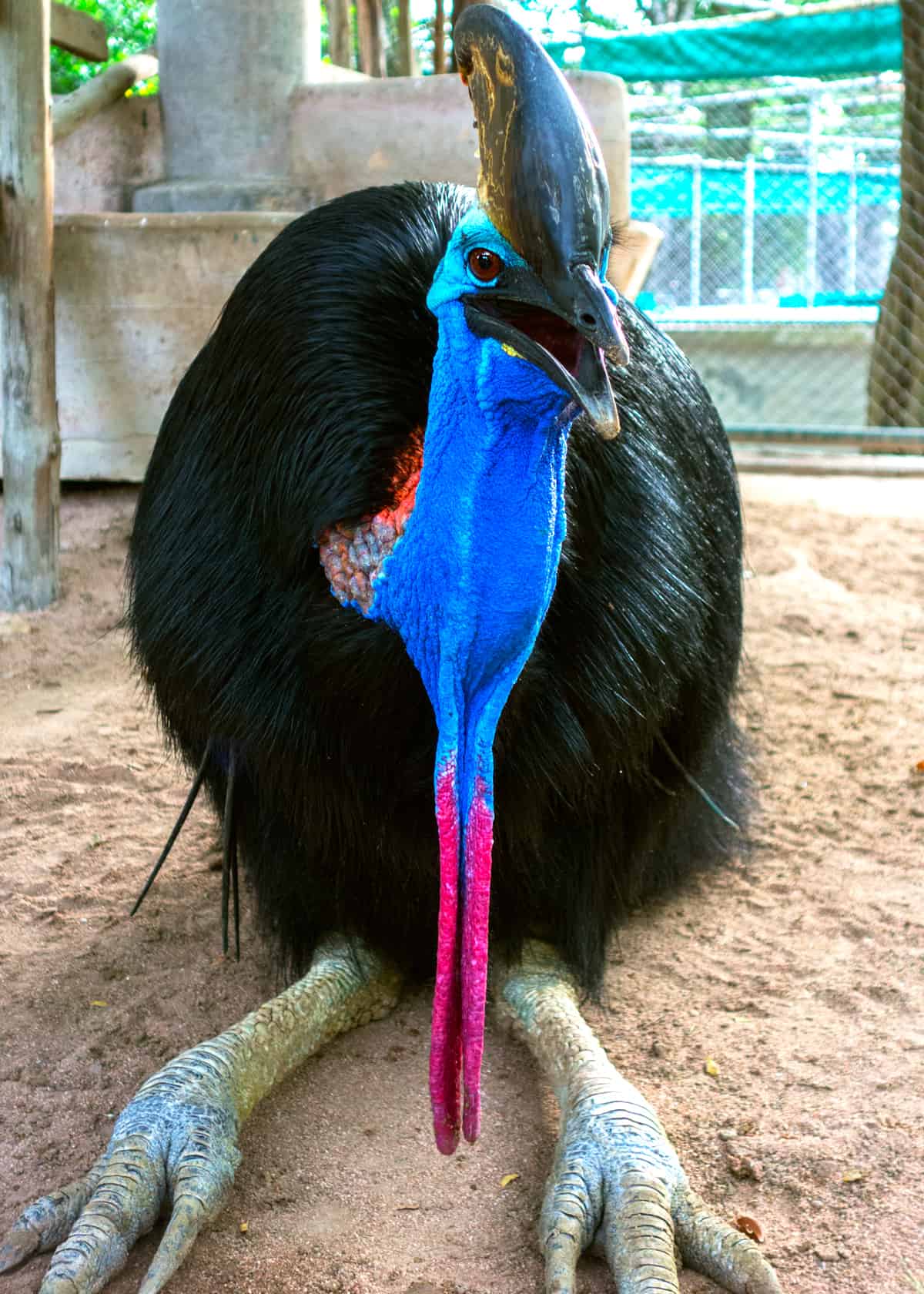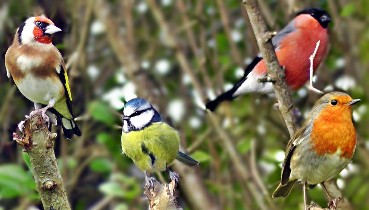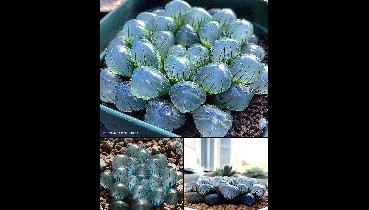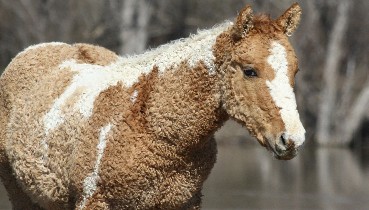
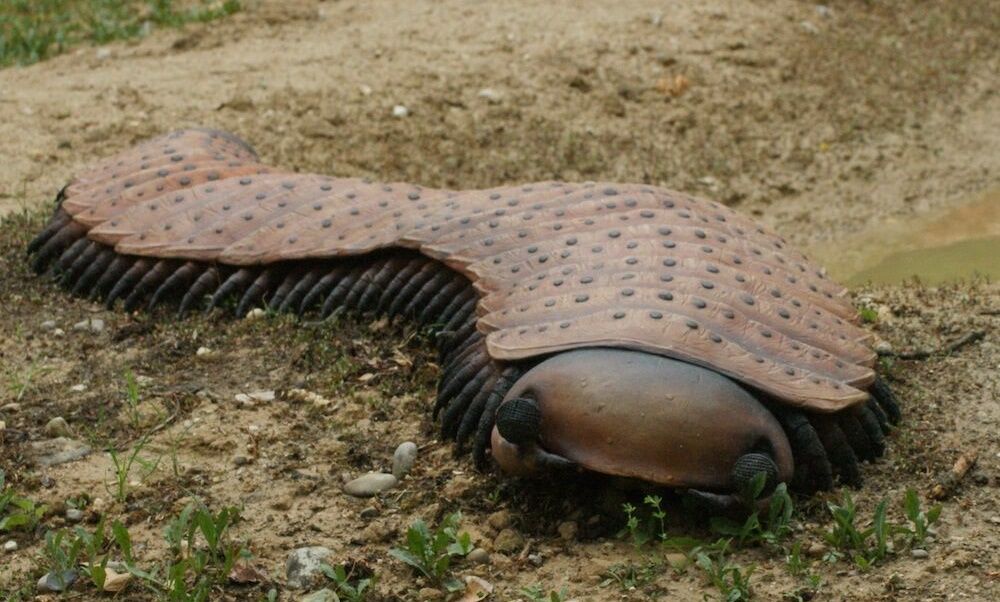
74 Scary and Creepy Animals (That Actually Exist)
Looking to be amazed by some of this planet’s scary animals and critters? You’re in the right place. Here, we’ll cover scary fish, mammals, creepy reptiles, and more!
Scary Underwater Beasts
1. Wolffish
- Latin name: Anarhichas lupus
- Scary feature: Large teeth that stick out from the mouth
- Range: North Atlantic Ocean
- Size: Length: Up to 5 feet (1.5 m); Weight: 10 to 40 pounds (4.5 to 18.1 kg)
- Diet: Green crabs, sea urchins, whelks, starfish, sea clams and large hermit crabs
Teeth are what give the wolffish its ferocious appearance. Its massive jaw is crammed with blunt, powerful teeth in the back and large, pointy ones in the front that stick out even when the mouth is closed.
An eel-like body and undulating swimming movements add to the scary factor.
Contrary to their appearance, they are kind of “friendly” with people. Especially the Pacific wolffish (or wolf eel), who are known to approach divers and eat out of their hand.
2. Frilled Shark
- Latin name: Chlamydoselachus anguineus
- Scary feature: 300 needle-like teeth
- Range: Atlantic, Pacific, and Indian Oceans
- Size: Length: Up to 6.6 feet (2 m)
- Diet: Squid, bony fishes and smaller sharks
Another long, eel-like creature with rows and rows of needle-like teeth (300 in all) plus dental spines. Frilled sharks are so named after their six pairs of gill slits that form a “frilly” appearance.
This rarely seen shark is believed to attack its prey like a snake by bending its body and lunging forward to strike.
Some also believe that this fearsome shark was the inspiration for all those tales of sea serpents and monsters. Fortunately for us, these guys live deep in the ocean.
When they do surface, the biggest likelihood is that they are injured, so they won’t pose you any danger.
3. Goliath Tigerfish
- Latin name: Hydrocynus goliath
- Scary feature: Huge size, dagger-like teeth, fierce hunter
- Range: Congo River Basin and Lake Tanganyika in Africa
- Size: Length: Up to 4.9 feet (1.5 m); Weight: 110 pounds (50 kg)
- Diet: Fish
It’s called Goliath because it’s a huge, muscular fish that can grow more than four feet long and weigh over a hundred pounds. It also has a gaping mouth full of dagger-like teeth.
Learn more in our Goliath Tigerfish guide
Like a tiger, it’s a fierce predator. It hunts alone and stealthily stalks its prey in calm eddies only to chase it into turbulent waters for the kill.
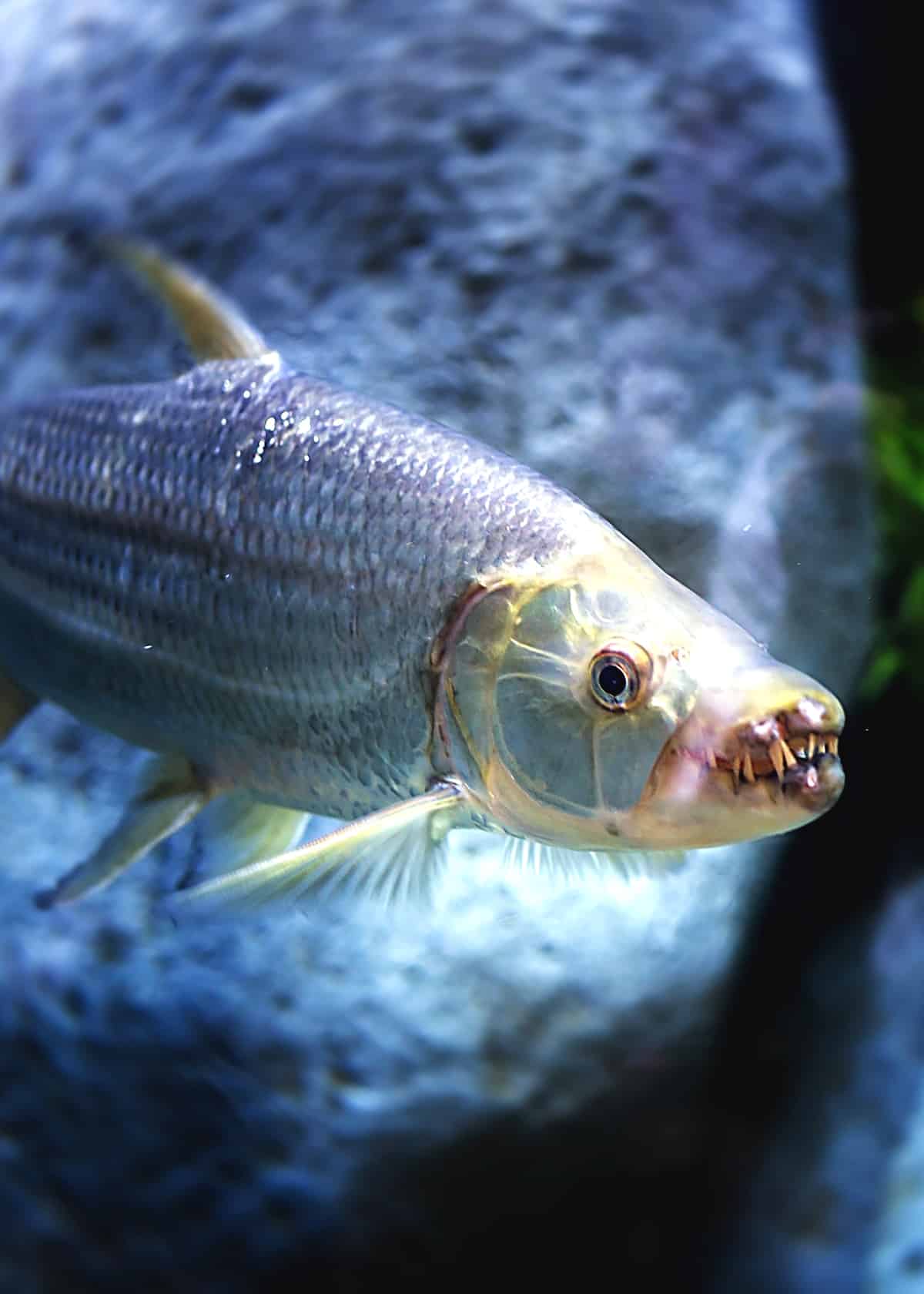
4. Textile Cone Snail
- Latin name: Conus textile
- Scary feature: Deadly venomous sting
- Range: Red Sea, Indian Ocean, off Australia and New Zealand
- Size: Length: 3.5 to 3.9 inches (9 cm to 10 cm)
- Diet: Shellfish (including snails)
Designed with an intricate pattern of triangle and square shapes and yellow, gold and brown colors, the textile cone snail is a beautiful sea creature with a deadly sting.
It has a harpoon-like tooth that injects venom that has killed humans who either picked it up or accidentally stepped on it while it was hidden in sandy, shallow water.
5. Hagfish
- Latin name: Myxini
- Scary feature: Secretes a sticky slime for defense
- Range: Worldwide
- Size: Length: 19.7 inches (0.5 m)
- Diet: Shrimps, hermit crabs, squid, bony fishes, sharks, whale flesh
Hagfish are creepy but unique creatures that resemble eels. They don’t have jaws, but they have two horned teeth.
They’re the only known animal to have a skull without a spine (vertebrae).
When threatened or captured, they secrete a sticky slime that clogs the gills of their predators, causing them to suffocate if they don’t release the hagfish.
6. Vampire Fish (Payara)
- Latin name: Hydrolycus scomberoides
- Scary feature: Two long fangs
- Range: Amazon Basin of South America
- Size: Length: 1 to 1.7 feet (30 to 51 cm); Weight: 10 to 35 pounds
- Diet: Other fish (including piranhas)
Payaras are called vampire fish because, in addition to spiky teeth, they have two elongated fangs jutting up from their lower, upturned jaws.
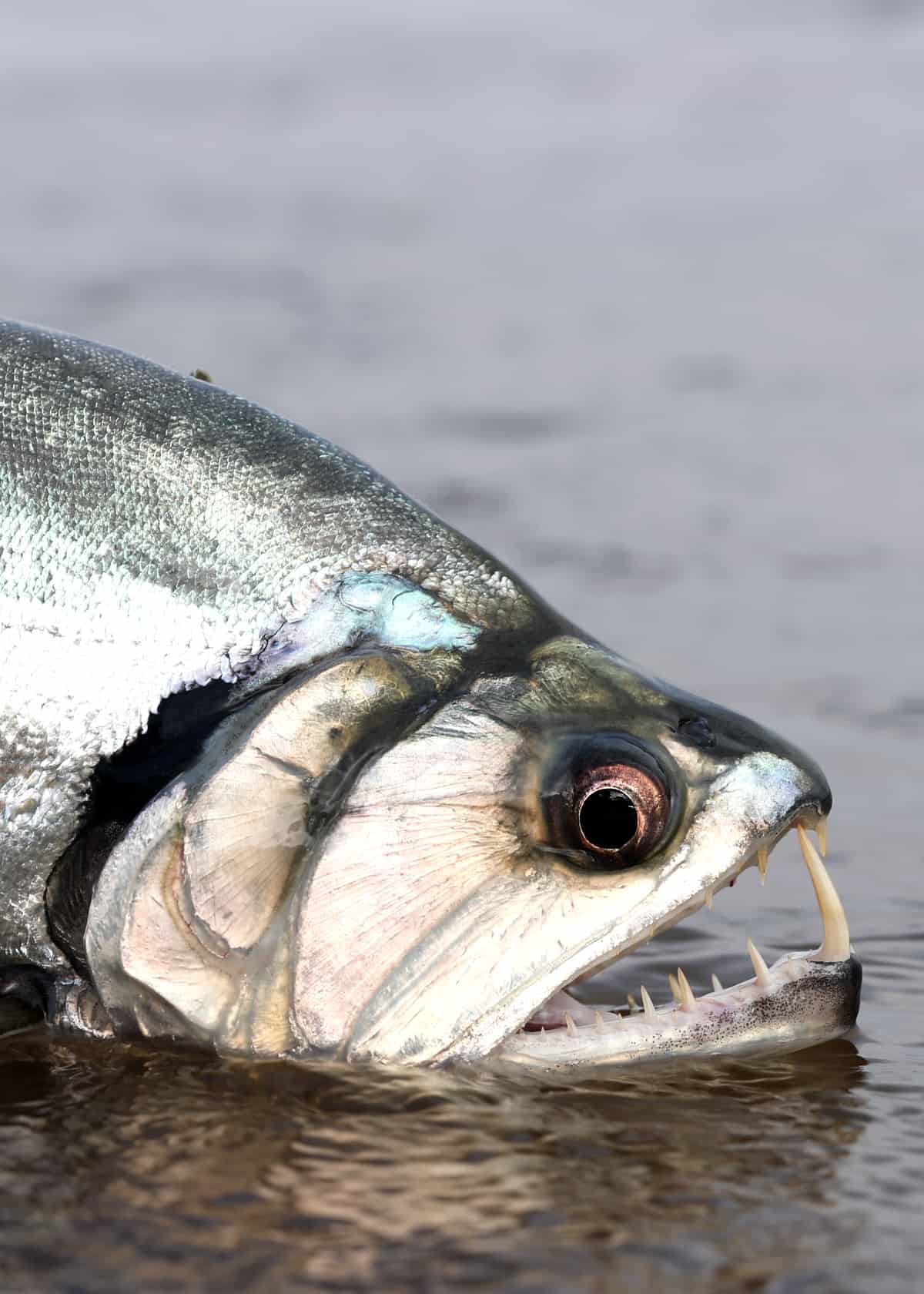
Payaras hunt alone by swimming into schools of fish and use their fangs to impale prey which includes piranhas. Fish that eat piranhas are scary animals indeed.
7. Needlefish
- Latin name: Belonidae
- Scary feature: Long, needle-like jaws
- Range: Atlantic, Indian and Pacific Oceans, Red Sea and the Persian Gulf
- Size: Length: 1.2 to 37.4 inches (3.0 to 95 cm)
- Diet: Small fish, krill, crustaceans, small squid
Needlefish are so named because of their really long jaws that pack many sharp teeth.
These fish travel in schools near the surface of the water where they’re attracted to artificial light and can leap out from the water at a speed of 38 mph.
This creates a dangerous situation for night fishermen because needlefish have been known to seriously wound people and even kill a few.
They do this by jumping out of the water and unintentionally lodging themselves in fishermen like arrows. Their beaks have even been known to break off in the skin. Yikes!
8. Angler Fish
- Latin name: Lophiiformes
- Scary feature: Natural fishing rod growing on its head
- Range: Worldwide
- Size: Length: 0.8 inches to 3.3 feet (2.0 to 100 cm); Weight:Up to 90 pounds (40 kg)
- Diet: Small fish, shrimp, small squid and turtles
It’s called an angler because the female features a natural “fishing rod” protruding from the top of her head that lights up in the dark.
The female wiggles it and uses it as a lure to attract both prey and mates.
One or more much smaller males bite into the female and fuse their bodies with hers to live a parasitic life.
9. Vampire Squid
- Latin name: Vampyroteuthis infernalis
- Scary feature: Red eyes and “cloak”
- Range: Oceans around the world
- Size: Overall length: Up to 1 foot; Body Length: 6 inches
- Diet: Organic debris and dead animal bodies that fall from the surface
This vampire squid looks like it’s related to Count Dracula because of its red eyes and eight webbed arms that resemble a dark cloak. But this deep-sea squid is really just a cool illusionist.
If threatened, it turns its “cloak” inside out to display spiny protrusions. If that doesn’t work, it ejects a glowing, blue substance (bioluminescent mucus) to confuse its predator and escapes.
10. Saber-Toothed Viperfish
- Latin name: Chauliodus sloani
- Scary feature: Huge fangs
- Range: Worldwide
- Size: Length: 11 to 12 inches (30 cm)
- Diet: Shrimp, squid, hermit crabs, anchovies, mackerel, and other small fish
One of the scary animals of the deep sea, the saber-toothed viperfish is easily recognized by its huge mouth and fangs so large that they curl back toward the fish’s eyes.
This silvery blue/black viperfish uses its fangs to impale its prey after swimming toward them at high speeds.
11. Marine Hatchetfish
- Latin name: Sternoptychinae
- Scary feature: Shaped like a hatchet
- Range: Atlantic, Pacific, and Indian Oceans
- Size: Length: 1.1 to 6 inches (2.8 to 12 cm)
- Diet: Plankton and small fish
Can you imagine seeing a hatchet blade swimming toward you? Well, that’s what the marine hatchetfish looks like.
These fish have special organs that light up their bodies similar to fireflies. Ths light-producing ability protects them against predators and plays a role in courtship.
12. Basking Sharks
- Latin name: Cetorhinus maximus
- Scary feature: Massive size and huge mouth
- Range: Pacific and Atlantic Oceans
- Size: Length: 20 to 26 feet (6 to 8 m)
- Diet: Zooplankton, small fish and invertebrates
Leisurely moving along the surface, this bus-sized shark appears to be basking in the warm water, but what it’s really doing is filter-feeding.
It coasts along with its 3-foot mouths open, taking in small fish and plankton that get trapped the shark’s gills that are lined with 3-inch grill rakers.
13. Ninja Lantern Shark
- Latin name: Etmopterus benchleyi
- Scary feature: Stealthy hunting behavior
- Range: Pacific Coast of Central America
- Size: Length: Up to 20 inches
- Diet: Shrimp and small fish
The sleek, black ninja lantern shark is among the ocean’s scary animals because it lurks through the deep, dark water sneaking up on its prey.
It produces a faint glow that deceives its prey into thinking it to be light penetrating the water.
Another cool thing about this shark is that its scientific name, Etmopterus benchleyi, is after the Jaws novelist, Peter Benchley.
14. Moray Eel
- Latin name: Muraenidae
- Scary feature: Snake-like body, sharp teeth, and toxic skin
- Range: Worldwide
- Size: Length: 6 to 15 inches (15 to 38 cm); Weight: 30 pounds (kg)
- Diet: Smaller fish, octopuses, squid, crabs, and cuttlefish
With more than 200 different species worldwide, this snake-like eel with sharp teeth is one of the underwater world’s top predators.
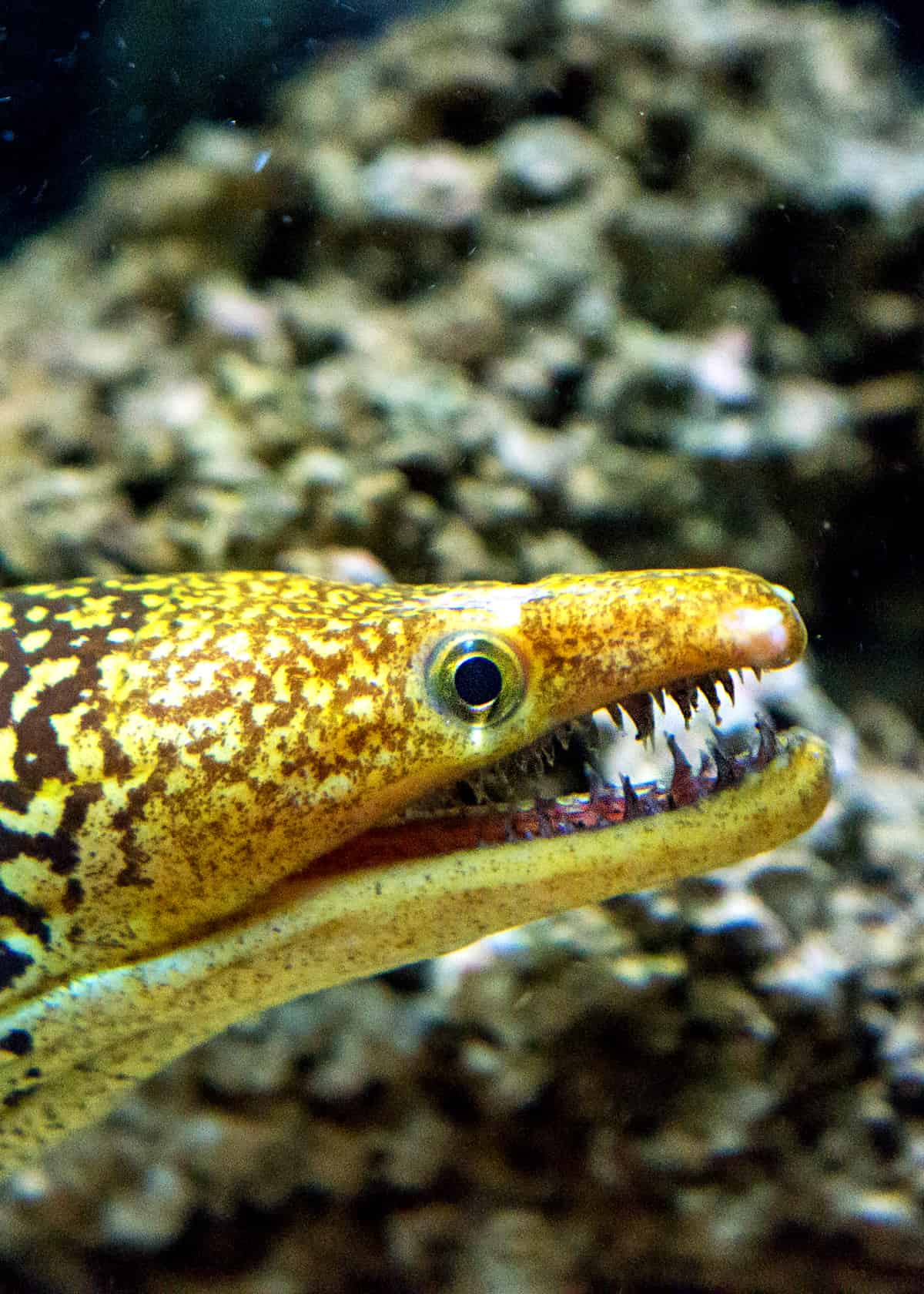
Often hiding in caves and coral reef, the moray eel is an ambush hunter with scaleless skin that secretes a slippery substance that’s toxic in some species.
15. Luna Lionfish
- Latin name: Pterois lunulata
- Scary feature: Venomous spines
- Range: Western Pacific Ocean
- Size: Length: 2 to 15 inches (5 to 38 cm); Weight: 2.5 pounds (1.13 kg)
- Diet: Various fish species, invertebrates, and mollusks
Luna lionfish are among the most beautiful fish you can see while diving underwater in the Pacific Ocean, but it’s best not to touch them.
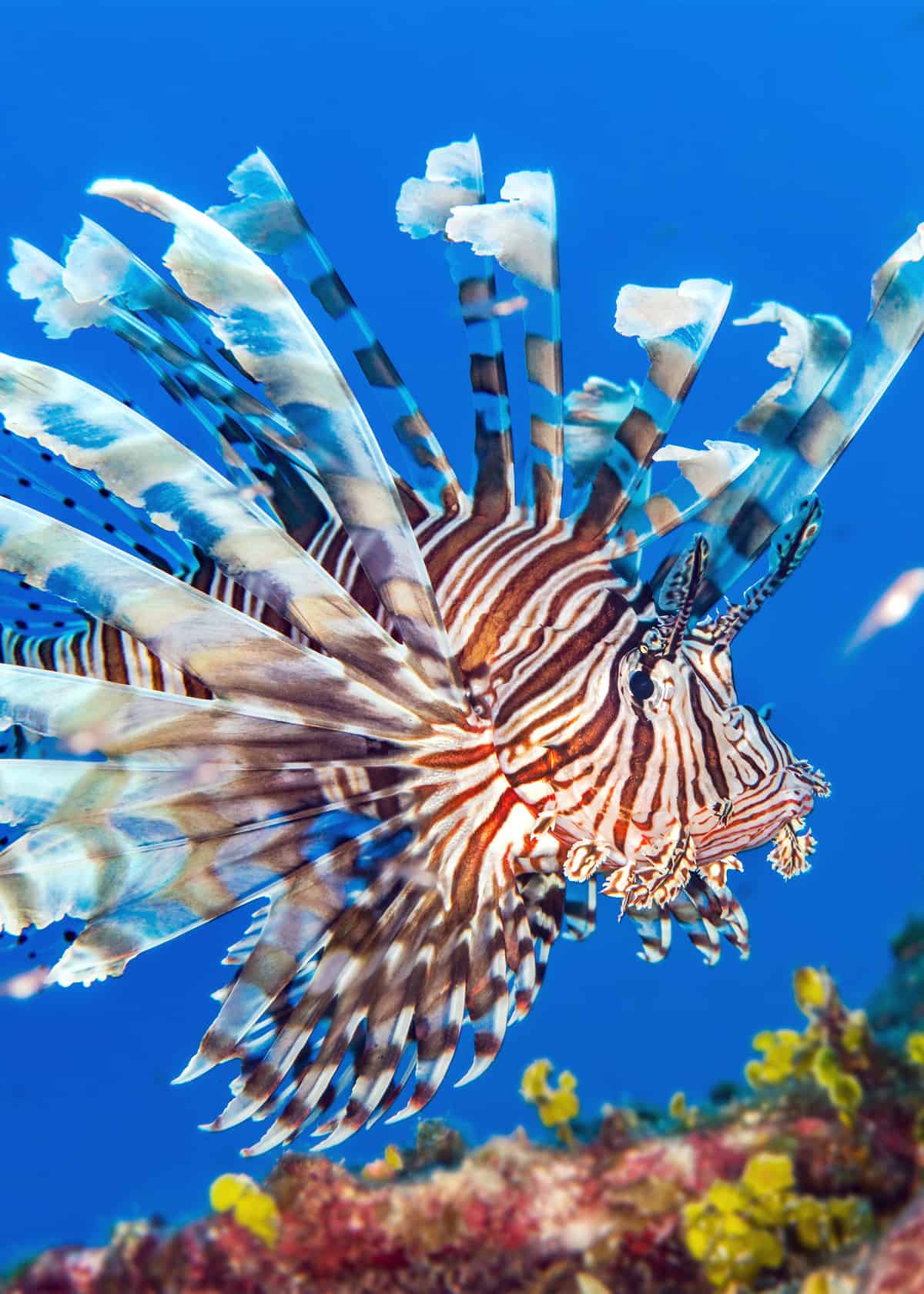
They have colorful stripes and long, billowing spines that contain venom which is not fatal to humans but can cause severe reactions and sickness.
16. Candiru
- Latin name: Vandellia cirrhosa
- Scary feature: Rumored to swim up human urethras
- Range: Amazon Basin of South America
- Size: Length: 1 to 1.97 inch (2.5 to 5 cm); Width: 0.25 inches (0.64 cm)
- Diet: Blood of other fish
The candiru is a tiny fish that induces fear in many people because it’s been rumored about that it’s attracted to human urine and can swim up someone’s stream of urine into their urethra and cause severe pain and infection.
Despite one sketchy documented case, these rumors appear to be false. Besides, this tiny, translucent fish is too big to enter a human urethra. The facts just don’t match the stories.
All these fish normally does is stick its head into a fish’s gills and drink their blood. Still freaky, but not nearly as terrifying.
17. Portuguese Man of War
- Latin name: Physalia physalis
- Scary feature: Extremely venomous sting
- Range: Atlantic, Indian and Pacific Oceans
- Size: Length: 30 to 165 inches (9 to 50 m)
- Diet: Fish and plankton
Did you know that a Portuguese man of war isn’t a single animal but a colony of organisms that work and function together as one?
Named after its resemblance to an 18-century Portuguese sailing ship, this creature has long tentacles that are extremely venomous and can harm or kill a human even if they’re dead or detached.
18. Goblin Shark
- Latin name: Mitsukurina owstoni
- Scary feature: Ghostly skin and powerful jaws
- Range: Atlantic, Pacific, and Indian Oceans
- Size: Length: 10 to 13 feet; Weight: Up to 460 pounds
- Diet: Fish, squid, shrimp, crabs
Way down deep in the ocean lives this rare, ghostly-skinned shark with a long, flat snout.
While it remains a mysterious shark that scientists still know little about, the goblin shark is known for its mouth full of nail-like teeth and intricate jaws that can devour prey before you can blink your eyes.
19. Electric Eel
- Latin name: Electrophorus electricus
- Scary feature: Produces electrical shock
- Range: South America
- Size: Length: 8.22 feet (2.5m); Weight: 44 pound (20kg)
- Diet: Fish, amphibians, birds and small mammals
Electric eels are best known and feared for their ability to generate a 650-volt electrical shock that’s powerful enough to injure a human.
Although they resemble long eels, they really aren’t thought to be eels at all.
These scaleless fish use their special electrical powers to navigate muddy river bottoms, communicate with each other, and stun their prey.
20. Lion’s Mane Jellyfish
- Latin name: Cyanea capillata
- Scary feature: Hair-like tentacles and venomous sting
- Range: English Channel, Irish Sea, North Sea, and the Arctic, northern Atlantic, and northern Pacific Oceans
- Size: Bell diameter: Up to 8 feet ( 2.4 m); Tentacle length: Up to 120 feet (37 m)
- Diet: Fish, crustaceans and smaller jellyfish
The world’s largest jellyfish and one of the world’s longest animals, the lion’s mane jellyfish!
It gets its name from its long, hair-like tentacles which number around 1,200 and are divided into eight clusters.
The tentacles deliver a powerful sting for capturing prey but usually only causes minor pain and redness to humans.
21. Box Jellyfish
- Latin name: Cubozoa
- Scary feature: Extremely potent venom
- Range: Indo-Pacific region, Atlantic and Pacific Oceans, Mediterranean Sea
- Size: Box diameter: 12 inches (30 cm; Tentacles length: 9.8 feet (3 m); Weight: 4.4 pounds (2 kg)
- Diet: Fish and shrimp
It may resemble a pale blue or translucent Medusa head floating in the ocean, but it’s really a box jellyfish.
Its “bell” is box-shaped with 15 dangerous tentacles extending from each corner.
Each tentacle has thousands of stinging cells that produce a venom regarded among the most powerful in the world, causing a number of human deaths. Not something you want to snuggle with!
22. Blue-ringed Octopus
- Latin name: Hapalochlaena
- Scary feature: One of the world’s most venomous marine animals
- Range: Pacific and Indian oceans
- Size: Length: 5 to 8 inches (12 to 20 cm)
- Diet: Crabs, hermit crabs, shrimp, and other crustaceans
The blue-ringed octopus is a colorful creature, known for its yellow skin and blue/black rings that flash bright blue when threatened.
It’s also fairly small in size (only about 5 inches), but the blue-ringed octopus is one of the most venomous animals in the world.
Its bite is barely felt but can cause paralysis and death within minutes.
23. Lamprey
- Latin name: Petromyzontiformes
- Scary feature: Funnel-like mouth that sucks blood from other fish
- Range: North Atlantic Ocean, Mediterranean Sea, and large North American lakes
- Size: Length: 5 to 40 inches (13 to 100 cm)
- Diet: Blood of other fish
Sometimes called lamprey eels, lampreys are parasitic fish known for their funnel-like mouths with which they use to latch onto other fish and suck their blood. Yikes!
Because of this, some people call them “vampire fish.” They also have long, scaleless bodies that grow up to 40 inches in length.
Scary Reptiles & Amphibians
For some people, just hearing the word “snake” or “frog” is enough to send them running. Here at EverywhereWild, we have a bit of a stronger constitution.
So read on, if you dare.
24. Hairy Frog aka Wolverine Frog, Horror Frog
- Latin name: Trichobatrachus robustus
- Scary feature: Hairy thighs and broken bone claws
- Range: Central Africa
- Size: Length: 4.3 inches (11 cm)
- Diet: Slugs, spiders, beetles, grasshoppers, and myriapods
Whoever heard of a frog with hair?! The hairy frog, also called the wolverine frog, looks like it’s part werewolf.
The male has hairy-like structures growing on its upper thighs. These “hairs” are actually arteries and skin, that may be used to take in more oxygen.
Another bizarre feature of this frog is that, when threatened, its claws are extended after breaking through the toe bones.
After the frog relaxes, the claws retract and the toes regenerate.
25. Thorny Dragon Lizard
- Latin name: Moloch horridus
- Scary feature: false head
- Range: Australia
- Size: Length: 7.9 inches
- Diet: Mostly ants
Spiky skin and two large, scaly horns on its head make the thorny dragon lizard a frightful sight. But unless you’re an ant, you have nothing to fear.
To deter predators, it can flash its “false head” or puff itself up.
26. Crocodile Monitor
- Latin name: Varanus salvadorii
- Scary feature: Long, powerful tail
- Range: New Guinea
- Size: Length: 7 to 13 feet (2.1 to 3.9 m); Weight: Up to 200 pounds (90 kg)
- Diet: Small mammals, birds, eggs, frogs, snakes and carrion
Resembling a scary dinosaur, the crocodile monitor is one of the world’s longest lizards.
Mostly dark green with yellow spots, a long neck, and sharp teeth and claws, this lizard is distinguished by its blunt snout and an extremely long tail that it uses as a tool for climbing trees and as a whip in defense.
It’s also believed that it may be the inspiration for the velociraptors from the Jurassic Park franchise. So these guys are pretty cool; and pretty scary.
27. Giant Spitting Cobra
- Latin name: Naja ashei
- Scary feature: Spits out venom that causes temporary blindness
- Range: Eastern and northeastern Africa
- Size: Length: 4.3 to 6.6 feet (1.3 to 2.0 m)
- Diet: Birds, eggs, lizards, rats, smaller snakes, and insects
The giant spitting cobra is the world’s largest of all the world’s spitting cobra species.
As its name suggests, it spits out venom when threatened.
But this species can spray out a much larger volume at one time than other species with an accuracy of up to 6.6 feet.
Because its venom can cause temporary blindness, the cobra always aims for the face of its predator.
28. Snake-necked Turtle
- Latin name: Chelodina
- Scary feature: Snake-like neck
- Range: Australia and southern New Guinea
- Size: Length: 10 inches
- Diet: Insects, worms, tadpoles, frogs, small fish, and crustaceans
If you only saw the long neck and head of this turtle sticking out of the water, you’d think it was a snake, but it’s really a snake-necked turtle.
It looks creepy but is harmless and spends its time walking on the river bottom searching for prey to vacuum up into its mouth.
29. Gharial
- Latin name: Gavialis gangeticus
- Scary feature: Long, sword-like snout with 100 razor-sharp teeth
- Range: Northern parts of the Indian subcontinent
- Size: Length: 11 to 20 feet (3.35 to 6 m); Weight: 351 to 551 pounds (159 to 250 kg)
- Diet: Fish, frogs, crustaceans
Crocodiles are scary animals anyway, but what about one with a long, sword-like snout that looks like it could slice you up for dinner with its 100 razor-sharp teeth?
That monster would be a gharial, a beast from India with a weird, bulbous growth on its snout.
Not something you would want to cuddle up to, but gharials are unlikely to hurt you. They are specialized fish hunters and tend to stick to that.
30. Yellow-lipped Sea Krait
- Latin name: Laticauda colubrina
- Scary feature: Venomous bite
- Range: Eastern Indian and western Pacific oceans.
- Size: Female length: 50 inches (128 cm) long; Male length: 30 inches (75 cm)
- Diet: Small fish and eels
The yellow-lipped sea krait is a blue sea snake with distinctive black stripes, a yellow snout, and a paddle-like tail that is used for swimming.
It has a potent venom that it uses when preying on small fish and eels.
It sometimes slithers out on land, but it isn’t aggressive and usually doesn’t pose a threat to humans.
31. Alligator Snapping Turtle
- Latin name: Macrochelys temminckii
- Scary feature: Powerful bite
- Range: Southeastern United States
- Size: Length: 13.8 to 31.8 inches (35 to 80.8 cm); Weight: 19 to 176 pounds (8.4 to 80 kg)
- Diet: Fish, amphibians Including other turtles), snakes, crayfish, worms, water birds and aquatic plants
The largest freshwater turtle in the world, the alligator snapping turtle has powerful jaws and rough ridges on its skin that liken it to an alligator.
It has a pink tongue that resembles a worm which the turtle wiggles to lure fish into its mouth. Its bite is powerful enough to cause serious injury.
32. Coral Snake
- Latin name: Micrurus fulvius
- Scary feature: Potent venom
- Range: Southeastern United States
- Size: Length: 18 to 20 inches; (45 to 50 cm)
- Diet: Smaller snakes, frogs, lizards, small rodents, nestling birds
Recognized by its vibrant colors and patterns of red with black (or yellow) bands, the coral snake is considered one of the most venomous snakes in the world.
Fortunately, it doesn’t carry much of its venom in its fangs.
Plus, the fangs are small and fixed instead of contracting, making them too weak to do much damage.
33. Black Mamba
- Latin name: Dendroaspis polylepis
- Scary feature: Powerful venom
- Range: Sub-Saharan Africa
- Size: Length: 6.6 to 14.8 feet (2 to 4.5 m)
- Diet: Birds and small mammals (rodents, bats, bushbabies)
The most feared snake in Africa, the black mamba is highly venomous and capable of killing a human within just a few minutes without antivenom treatment.
The black mamba varies from gray to green or brown in color, but it gets its name from its inky-black mouth that it displays when threatened.
34. Mata Mata Turtle
- Latin name: Chelus fimbriata
- Scary feature: Triangular head and long, prickly neck
- Range: South America
- Size: Length: 16 to 18 inches; Weight: Up to 33 pounds
- Diet: Fish and aquatic invertebrates
Unlike any other turtle, the mata mata has a triangular head and a really long neck that’s lined with ragged skin flaps and prickly barbels.
While these features appear frightening, they camouflage the turtle in shallow, sandy streams.
The mata mata moves very little and can’t chew, so it just sucks its prey into its mouth like a vacuum cleaner.
35. Komodo Dragon
- Latin name: Varanus komodoensis
- Scary feature: Huge dinosaur-like body and venomous saliva
- Range: Indonesian islands of Komodo, Rinca, Flores and Gili Motang
- Size: Length: Up to 10 feet (3 m); Weight: 150 pounds (70 kg)
- Diet: Birds, invertebrates, mammals (Timor deer) and carrion
Resembling a small dinosaur, the Komodo dragon is the world’s largest lizard. These big lizards are dangerous!
It has venomous saliva, scaly skin, a deeply forked tongue, and a tail that’s as long as its body. It rarely attacks humans but has been known to kill people.
36. Saltwater Crocodile
- Latin name: Crocodylus porosus
- Scary feature: Strongest bite force of any animal
- Range: East India, northern Australia, Micronesia and the Sundaic region
- Size: Length: 10 to 20 feet (3 to 6.1 m); Weight: Up to 2,370 pounds (1,075 kg)
- Diet: Fish, birds, mammals
One of the largest crocodiles in the world, this crocodile is unique from others of its kind.
Not just because it lives in saltwater, but also because it has a larger head, wider snout, and broader body.
Moreover, it’s confirmed to have the strongest bite force ever recorded of any animal, and they’re aggressive.
37. Satanic Leaf-tailed Gecko
- Latin name: Uroplatus phantasticus
- Scary feature: Horns and red eyes
- Range: Madagascar
- Size: Length: Up to 3.5 inches (including tail)
- Diet: Insects such as moths, crickets and spiders
Pretty much the only scary thing about this dude is his name. These are tiny little geckos that make good use of camouflage.
It has a tail and body that perfectly mimic a leaf in coloration, shape and other camouflage details such as leaf veins and insect damage.
Some species have horny projections on their head and red eyes, but these geckos are harmless to humans.
38. Poison Dart Frog
- Latin name: Dendrobatidae
- Scary feature: Excretes a lethal toxin
- Range: South America
- Size: Length: 0.6 to 2.4 inches (1.5 to 6 cm); Weight: 0.07 to 0.25 ounces (2 to 7g)
- Diet: Insects, ants, spiders
Some of the scary animals on this list just look that way but are perfectly harmless. The poison dart frog is just the opposite.
It’s a colorful, attractive frog but is one of the world’s most dangerous creatures.
This rainforest frog excretes a powerful toxin that can cause paralysis, sickness and even death. This is why indigenous tribes once used it in their blow-darts.
39. Gila Monster
- Latin name: Heloderma suspectum
- Scary feature: Venomous but its exaggerated reputation is scarier
- Range: Southwestern United States and Mexico
- Size: Length: Up to 2 feet (0.61 m); Weight: 5 pounds (2.26 kg)
- Diet: Small birds, frogs, smaller lizards, insects, carrion and small mammals
The only venomous lizard endemic to the United States, the Gila monster is a large lizard with claws, a forked tongue, and pale spots on is scaly dark skin.
Many rumors have exaggerated this lizard’s reputation. It is venomous but is so slow-moving that it’s rarely a threat to humans.
Creepy Bugs, Insects, & Arachnids
Now some of these get to me… some bugs are seriously creepy. Let me know which makes you squirm!
40. Goliath Birdeater Spider
- Latin name: Theraphosa blondi
- Scary feature: Huge and has long fangs, stinging barbs
- Range: South America
- Size: Body length: 4.7 inches (12 cm); Leg span: 12 inches (30 cm); Fang length: 1.5 inches (3.8 cm)
- Diet: Earthworms, insects, frogs and occasionally small birds
The Goliath birdeater is one of the largest and heaviest spiders in the world. It’s also hairy and has fangs that grow longer than an inch in length.
It earned its bird-eater name after being observed eating a hummingbird, but it usually eats worms and frogs. It does have venom but harmless to humans.
Now personally, I’m not super put-out by spiders. They make me shiver, but for some reason, I really want to hold this guy.
41. Malaysian Jungle Nymph
- Latin name: Heteropteryx dilatata
- Scary feature: Huge insect with spiky legs
- Range: Malay Peninsula
- Size: Length: 4 to 6 inches (10 to 15 cm); Weight: 2.29 ounces (65 grams)
- Diet: Bramble, oak, ivy, raspberry, blackberry, and other leaves
Stick bugs are fascinating creatures, but have you ever seen the Malaysian jungle nymph? It’s huge! It’s one of the heaviest insects in the world.
Like the smaller versions, it resembles a green leaf or brown twig. It also lays the largest egg of any insect which is about 0.5 inches (1.3 cm) in length.
42. Bot Fly
- Latin name: Oestridae
- Scary feature: Can grow its larvae in human flesh
- Range: Central and South America
- Size: Length: 0.05 inches (0.127 cm)
- Diet: Adults don’t eat, but larvae eat blood cells of its host
This one really gets me. It looks like a cute bumblebee, but the botfly is one of the creepiest bugs on the planet.
It’s best known for laying its eggs on a mosquito which then transfers the larvae to flesh including that of humans.
The larvae grow inside the flesh and can cause skin lesions and infections. It’s absolutely disgusting and horrifying.
No videos because, ew.
43. Black Widow Spider
- Latin name: Latrodectus mactans
- Scary feature: Red hour-glass marking and potent venom
- Range: North and South America
- Size: Length: 1.5 inches (3.8 cm); Diameter: 0.25 inches (0.64 cm)
- Diet: Flies, mosquitoes, beetles, centipedes, grasshoppers, caterpillars and other spiders
Considered North America’s most venomous spider, the black widow is distinguished by the red hourglass-shaped marking on its abdomen, and it’s the low-cut leather catsuit. Wait; that’s not right…
Black widow venom is believed to be 15 times more powerful than a rattlesnake, causing vomiting, abdominal pain, and even death.
Fortunately, black widow bites are rare because this spider is shy and timid, unlike it’s MCU counterpart.
44. Mexican Red-kneed Tarantula
- Latin name: Brachypelma smithi
- Scary feature: Orange leg joints and venomous fangs
- Range: Pacific coast of Mexico
- Size: Body length: 4 inches (10cm); Leg span: 6 inches (15 cm); Weight: 0.53 ounces (15 g)
- Diet: Insects, crickets, small frogs, small lizards and mice
The Mexican red-kneed tarantula is a black, hairy spider that gets its name from the reddish-orange patches on its leg joints.
It does have venomous fangs used to kill prey, but it isn’t any more harmful to a human than a bee sting.
Its docile nature makes it the most popular pet tarantula in the world.
Personally, I find these guys amazing. I think they are beautiful creatures not to be feared, but respected.
45. Giant Desert Centipede
- Latin name: Scolopendra heros
- Scary feature: Huge creepy crawly with a painful bite
- Range: Mexico and Southwest United States
- Size: Length: Up to 8 inches (20 cm)
- Diet: Worms, crickets, snails, roaches, mice, frogs, lizards and small birds
While there are some pretty big centipedes in the world, but the Amazon giant centipede is the largest, growing up to a foot long.
It has a reddish-brown body with 40 yellow legs. It delivers venom from its front pincers that can cause bad pain, redness, and swelling but nothing more serious to humans.
46. Golden Orb Spiders
- Latin name: Nephila clavipes
- Scary feature: Venomous
- Range: Southern United States, Africa, Asia and Australia
- Size: Length: Up to 5 inches (12.7 cm) including legs
- Diet: Mosquitoes, bees, butterflies, flies, moths, wasps, grasshoppers, stink bugs
The golden orb spider, also called the banana spider, is a colorful spider of red, yellow and black.
It’s known to spin intricate, orb-shaped webs that are distinctively golden in color and can stretch a meter in width.
This spider is mildly venomous, causing pain, redness, and blisters at the bite location.
47. Lobster Moth Caterpillar
- Latin name: Stauropus fagi
- Scary feature: Forelegs like lobster claws
- Range: Worldwide
- Size: Length: Up to 2.75 inches (70 mm)
- Diet: Plant leaves
You normally see lobsters in the ocean, but what if you saw one crawling on a tree branch? You’d most likely be seeing the lobster moth caterpillar.
It’s named after the lobster because its long forelegs look like lobster claws.
And its swollen anal section arches over its back like a lobster that’s about to attack a predator. This is to scare birds away.
48. Tailless Whip Scorpion
- Latin name: Amblypygi
- Scary feature: Legs that resemble whips
- Range: North and South America, Asia, and Africa
- Size: Length: 4 to 10 inches (10 to 25 cm)
- Diet: Insects
The tailless whip scorpion is not a scorpion at all but looks like a combination of a scorpion and a spider.
It is so named because of its lack of a tail and “whip-like” front legs that are much longer than its body. It’s not venomous and poses no threat to humans.
49. Tarantula Hawk
- Latin name: Pepsis thisbe
- Scary feature: Feeds tarantulas to its larvae
- Range: Every continent except Europe and Antartica
- Size: Length: Up to 2 inches (5mm)
- Diet: Nectar, flowers, and tarantulas
The tarantula hawk is a large wasp with a blue body and orange wings. Commonly found in the Grand Canyon, it feeds on nectar and pollen.
However, the female captures tarantulas to feed to her larvae – earning them their name.
It won’t sting unless threatened, but when it does, the sting is considered one of the most painful of any insect.
50. Milkweed Assassin Bug
- Latin name: Zelus longipes
- Scary feature: Disease-causing saliva
- Range: Southern North America, Central America, and South America
- Size: Length: 0.5 to 1.5 inches
- Diet: Blood of other insects (and sometimes humans)
Don’t let this bug fool you. The milkweed assassin bug a dangerous pretender. It tries to look and act just like the harmless milkweed bug that feeds only on insects.
It does this to attract other insects so it can stab them with its large fang and drink their blood.
It has venomous saliva that can spread infectious diseases, Chagas, in humans.
51. Japanese Giant Hornet
- Latin name: Vespa mandarinia japonica
- Scary feature: Extremely painful sting and kills whole bee colonies
- Range: Japan
- Size: Length: 1.6 to 1.8 inches; Wingspan: 2.4 inches
- Diet: Honey bees, wasps, praying mantises and other insects
The Japanese giant hornet has a painful sting that’s capable of sending you to the hospital!
Usually, the only people who need fear this hornet are beekeepers because it especially loves eating bee larvae.
Along with several of its buddies, it can invade and massacre a whole bee colony in just a couple of hours.
52. Africanized Bee (Killer Bees)
- Latin name: Apis mellifera scutellata
- Scary feature: Extremely aggressive with a lethal sting
- Range: United States, Central, and South America
- Size: Length: 0.50 inches (1.27 cm)
- Diet: Pollen
Also called killer bees, Africanized bees are the result of a man-made experiment that involved crossbreeding a European honey bee with an African honey bee.
The offspring, killer bees, are extremely aggressive with a lethal sting that’s killed more than 1,000 humans. They react in swarms and will chase their victims and sting repeatedly.
53. Emperor Scorpion
- Latin name: Pandinus imperator
- Scary feature: Huge size and massive claws
- Range: West Africa
- Size: Length: Up to 7.9 inches (20 cm)
- Diet: Insects
This guy’s fear factor pretty much ends with the creepy appearances. One of the largest scorpions in the world, the emperor scorpion grows up to almost eight inches in length.
It looks glossy black but glows blue or green under ultraviolet rays. It has massive red claws that it uses to grab prey.
It has a stinger and produces a mild venom that is not considered dangerous to humans.
54. Mosquitoes
- Latin name: Culicidae
- Scary feature: Deadliest animal in the world
- Range: Worldwide
- Size: Length: 0.11 to 0.24 inches (3 to 6 mm)
- Diet: Nectar and blood
Can you guess what’s the most deadly animal on the planet? The tiny mosquito!
Because its saliva can carry viruses and bacteria, it can transmit a long list of diseases that spread worldwide such as malaria, dengue, West Nile virus, Zika virus and more.
According to the World Health Organization, more than a million people die each year to these diseases, and even more millions are affected.
Scariest Mammals
Mammals may not strike fear into you the same way as reptiles and insects. But, there are still some pretty freaky ones!
55. Wolverine
- Latin name: Gulo gulo
- Scary feature: Sharp claws, powerful jaws, and ferocious attitude
- Range: Northern Canada, Alaska (USA), Nordic European countries and western Russia and Siberia
- Size: Length: 32.7 to 52.2 inches (82 to 133 cm); Weight: 12 to 55 pounds (5.5 to 25 kg)
- Diet: Carrion, mammals, birds and their eggs, roots, berries, seeds, insect larvae
No, no. Not Hugh Jackman with crazy hair. The wolverine is the largest land-dwelling species of the weasel family.
It has a stocky, muscular build and a broad head, short snout, and bushy tail. To top it off, the wolverine also has sharp claws, and powerful, bone-cracking jaws. They may not be made of Adamantium, but they are super strong!
It’s a fearless beast with a reputation of killing prey much larger than itself. Fortunately, there are no reports of attacks on humans.
56. Aye-Aye
- Latin name: Daubentonia madagascariensis
- Scary feature: Large ears, creepy fingers and eyes that glow in the dark
- Range: Madagascar
- Size: Length: 14 to 17 inches; Tail: 22 to 24 inches; Weight: 4 to 6 pounds
- Diet: Insects, larvae, fruit, seeds, fungi
Some scary animals are weirdly cute. Take the aye-aye for example. It looks like it could’ve been the inspiration for the Gremlins because of its large ears and eyes (which glow in the dark, of course) and long, weird fingers.
This furry creature happens to be the world’s largest nocturnal primate plus the world’s only primate that uses echolocation.
57. Naked Mole Rat
- Latin name: Heterocephalus glaber
- Scary feature: Pink, naked rat-like animal
- Range: Horn of Africa (Kenya, Ethiopia and Somalia)
- Size: Length: 5.1 inches; Weight: 1.2 to 2.8 ounces
- Diet: Roots and tubers
Neither a mole nor a rat, the naked mole rat has pink, wrinkled skin with only a few hairs on its tail and head that feature sensitive nerves that help with navigating in dark, underground tunnels.
Much can be learned from this creature that may benefit humans because it’s resistant to cancer and can survive hours with little oxygen.
58. Tube-nosed Fruit Bat
- Latin name: Nyctimene albiventer
- Scary feature: Weird, tubular nose
- Range: Eastern Australia, Indonesia, Papua New Guinea, Philippines, and the Solomon Islands
- Size: Length: 3.2 inches ( 8 cm); Weight: 1.1 ounces ( 31 g)
- Diet: Fruits, nectar, flowers, and pollen
The tube-nosed fruit bat looks sort of spooky-cute. It gets its name from its weird, tubular nostrils.
But adding to its odd appearance are the protruding eyes that glow red, a short blunt snout, and yellow spots on the ears and wings.
It’s a perfectly harmless creature that feeds on flowers, nectar, and pollen.
59. Cape Buffalo
- Latin name: Syncerus caffer
- Scary feature: Enormous horns and aggressive behavior
- Range: Central and Southern Africa
- Size: Height: 51 to 59 inches (130 to 150 cm); Weight: 935 to 1,910 pounds (425 kg to 875 kg)
- Diet: Grass, shrubs, insects
The Cape buffalo is best known for its enormous, curving horns that can span four feet wide. It can weigh nearly a ton and is extremely aggressive.
If any individual is threatened, the whole herd will charge the offender. It’s estimated that approximately 200 people die each year from Cape buffalo attacks.
60. Star-nosed Mole
- Latin name: Condylura cristata
- Scary feature: Face tentacles and huge claws
- Range: Eastern Canada and the eastern United States
- Size: Length: 4.6 inches ( 12 cm); Weight: 1.7 ounces ( 48 g)
- Diet: Small insects, fish, worms and other invertebrates
Star-nosed moles look like scary animals from an alien planet. They have 22 pink tentacles coming out of their face in the shape of a star.
These tentacles have 100,000 nerve fibers, making their “stars” the most sensitive touch organ of any other mammal.
They also have huge, shovel-like claws and can eat faster than any other earthling mammal.
They really are nothing to be afraid of. They are so small and only eat little insects. So, they are kind of ugly-cute!
61. Hippopatoumous
- Latin name: Hippopotamus amphibius
- Scary features: Massive size, gaping mouth, and huge teeth
- Range: Africa
- Size: Length: 10 to 16.5 feet (3.3 to 5 m); Height: 5.2 feet (1.6 m) tall at the shoulder; Weight: 3,000 to 9,920 pounds (1,400 to 4,500 kg)
- Diet: Grass and fruits but sometimes animal carcasses
It may look fat and sluggish, but the hippo is the world’s most dangerous land mammal, killing about 500 people each year in Africa.
It doesn’t eat people because it’s an herbivore, but it’s highly aggressive and doesn’t like intruders.
Its enormous weight, gaping mouth, huge teeth, and quick speed all create a mighty force.
62. Bearcat
- Latin name: Arctictis binturong
- Scary feature: Looks part bear and part wildcat
- Range: Southeast Asia
- Size: Length: 2 to 3 feet (61 to 91 cm); Weight: 25 to 31 pounds (11 to 14 kg)
- Diet: Fruit, leaves, shoots, eggs, fish, small mammals, birds, and carrion.
Seeing this nocturnal creature in the treetops at night could be frightening. The bearcat has the stocky shape of a bear and a face like a wildcat with long, white whiskers.
It also has sharp claws, black tufts on its ears, and a long, bushy tail that it uses to wrap around tree branches. If you don’t see it at first, you may hear its high-pitched growl.
63. Honey Badger
- Latin name: Mellivora capensis
- Scary feature: Fearless behavior and sharp claws and teeth
- Range: Sub-Saharan Africa, India, Western Asia, and the Arabian peninsula
- Size: Body length: 2.4 feet (73 cm); Tail length: 12 inches (30 cm); Weight: 19 to 26 pounds (9 to 12 kg)
- Diet: Honey, honey bee larvae, snakes, scorpions, tortoises, mammals, birds, eggs, berries, and roots
The honey badger loves honey, but it’s no sweet Winnie the Pooh. This member of the weasel family has been called the “world’s most fearless animal.”
Covered in fur and a thick hide that’s almost impossible to pierce, this badger also has really sharp teeth and claws.
It doesn’t think twice about chasing away lions and attacking a whole beehive of killer bees.
64. Black Flying Fox
- Latin name: Pteropus alecto
- Scary feature: Nothing scary here except scary myths
- Range: Australia, Papua New Guinea, and Indonesia
- Size: Length: 6.46 inches (16 cm); Weight: 1.57 pounds (0.71 kg); Wingspan: 3 feet (1 m)
- Diet: Fruit, nectar, and pollen
The black flying fox is actually a black bat that has a reddish-brown mantle like a fox.
Bats have a scary reputation, but this one is kind of adorable. I want to cuddle him!!
It has a really long tongue that’s used to eat fruit, and it’s among the world’s largest species of bats.

65. Vampire Bats
- Latin name: Desmodontinae
- Scary feature: Sucks the blood of birds and livestock (rarely humans)
- Range: Mexico, Central, and South America
- Size: Height: 2.75 to 3.75 inches (7 to 9.5 cm); Weight: 0.7 to 2 ounces (19 to 57 g); Wingspan: 5.9 to 7 inches (15 to 18 cm)
- Diet: Blood
Yes, these bats drink blood from birds and livestock, but the amount is very little considering that they are only about the size of a human thumb.
Vampire bats really don’t deserve their fearsome reputations.
They find their food by heat sensors on their noses, and they will regurgitate their blood consumption to share with starving colony members.
Scary Birds
Blue jays aren’t the only birds in the world. There are some pretty terrifying ones! Check out these scary birds.
66. Marabou Stork
- Latin name: Leptoptilos crumenifer
- Scary feature: Decaying flesh appearance
- Range: Sub-Saharan Africa
- Size: Height: 5 feet (1.52 m); Weight: 20 pounds (9 kg); Wingspan: 11 feet (3.35 m)
- Diet: Carrion
Nicknamed the “undertaker,” the marabou stork is associated with death. In addition to its preference for eating dead animals, the marabou stork even looks like death.
With its rotting-like head, flabby wattle, skinny, poop-stained legs, cloak-like wings, and hunched-over posture, it’s no wonder this bird is sometimes called the “Grim Reaper.”
67. Bearded Vulture
- Latin name: Gypaetus barbatus
- Scary feature: It eats the bones of the dead.
- Range: Europe, Asia, and Africa
- Size: Length: 37 to 49 inches (94 to 125 cm); Weight: 9.9 to 17.2 pounds (4.5 to 7.8 kg); Wingspan: 7.6 to 9.3 feet (2.31 to 2.83 m)
- Diet: Bones of other animals
With its massive, hulking figure, rusty-colored feathers, scruffy black beard, black eye band, and yellow-red eyes, the bearded vulture is a scary sight.
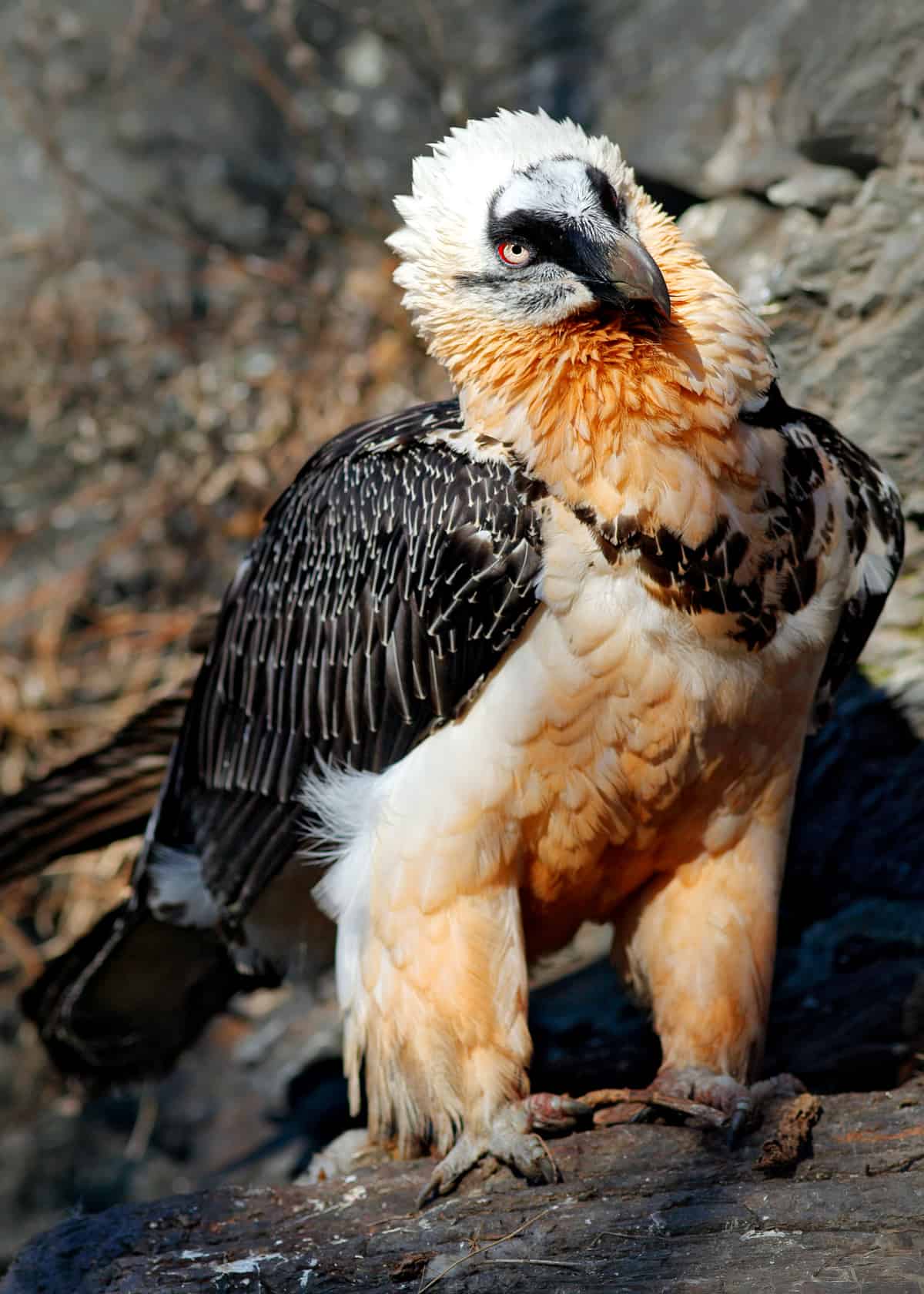
Its diet is even creepier because it feeds primarily on the bones of dead animals. This vulture has one of the strongest stomach acids in the world.
So, as long as you’re alive, you need not fear the bearded vulture.
68. California Condor
- Latin name: Gymnogyps californianus
- Scary feature: Huge wingspan, naked head and red eyes
- Range: California, Arizona, Utah of USA
- Size: Length: 43 to 55 inches (109 to 140 cm); Weight: 18 to 20 pounds (8 to 9 kg); Wingspan: 10 feet (3.05 m)
- Diet: Carrion
Even though the California condor stays clear of humans (unless you’re dead), this carcass-eating scavenger presents a dominating appearance with its bare, pink head, red eyes, and a black feather ruff around its neck.
Plus, it’s sometimes confused with a small airplane because it has the largest wingspan of any North American bird (10 feet).
69. Potoo
- Latin name: Nyctibius
- Scary feature: Bulging yellow eyes and haunting growl
- Range: Central and South America
- Size: Length: 19 to 24 inches (48 to 61 cm): Weight: 13 to 23 ounces (360 to 650g); Avg. Wingspan: 29 inches (74 cm)
- Diet: Large flying insects (beetles, moths, grasshoppers)
Another of the scary animals that look oddly cute is the potoo. You won’t see it during the day because its mottled gray/green plumage camouflages it while it snoozes in the trees.
However, at night, when the potoo comes out to hunt for insects and bats, its bulging, yellow eyes and loud, haunting growl will scare the bejeebers out of you.
70. Helmeted Hornbills
- Latin name: Rhinoplax vigil
- Scary feature: Creepy casque, red throat patch and scary laugh
- Range: Malay Peninsula, Sumatra, and Borneo
- Size: Length: 43 to 47 inches (110 to 120 cm); Weight: 6 to 6.8 pounds (2.6 to 3.1 kg)
- Diet: Fruits (especially figs) and insects
There’s a Punan myth that says this hornbill guards the river between life and death.
It certainly looks dressed for the job with its natural “headgear,” that heavy, weird-looking, helmet/casque thing on its head that it uses in combat with other birds.
Even more creepy is its red, bare throat patch. If its appearance doesn’t keep you on your side of the river, its maniacal laugh may send you running. These are some seriously weird birds.
71. Southern Cassowary
- Latin name: Casuarius casurarius
- Scary feature: Razor-sharp claws on its feet
- Range: Australia
- Size: Height: 5 to 6 feet (1.5 to 2 m); Weight: 125 pounds (57 kg)
- Diet: Fruit, berries, fungi and the occasional rodent, snail or lizard
You should be wary of the southern cassowary, and it’s not just because it’s a tall, huge bird with a royal blue neck, hairy black feathers, and a weird-looking helmet-like casque over its eyes.
Turns out dangerous dino-birds are also good for apple eating contests ??
It’s because it has razor-sharp claws on its feet that can cause serious wounds, making it the most dangerous bird in the world.
72. Vampire Finch Bird
- Latin name: Geospiza difficilis septentrionalis
- Scary feature: Drinks the blood of other birds
- Range: Galápagos Islands
- Size: Length: 1 inch (less than 3 cm); Weight: 71 ounces (20 g)
- Diet: Seeds, nectar, invertebrates, and blood of other birds
Finches are usually known to be colorful birds that eat seeds, but on the Galápagos Islands lives the dark-feathered vampire finch which feeds on the blood of other birds.
The vampire finch is known to peck at the wings and tails of booby birds until it draws blood to drink. Oddly enough, the boobies don’t seem to mind at all.
73. Shoebill
- Latin name: Balaeniceps rex
- Scary feature: Massive bill that resembles a shoe
- Range: Central-Eastern Africa
- Size: 43-55 inches (110 to 140 cm); Weight: 11 to 12 lbs (4.9 to 5.4 kg); Wingspan: 7.7 to 8.6 ft (230 to 260 cm
- Diet: Lungfish, water snakes, baby crocodiles, lizards, rodents and waterfowl
Standing more than four feet high with large feet, a wide wingspan, and a massive bill that looks more like a wooden clodhopper with a razor-sharp hook tacked on the end of it, the shoebill looks like it would be the local swamp bully.
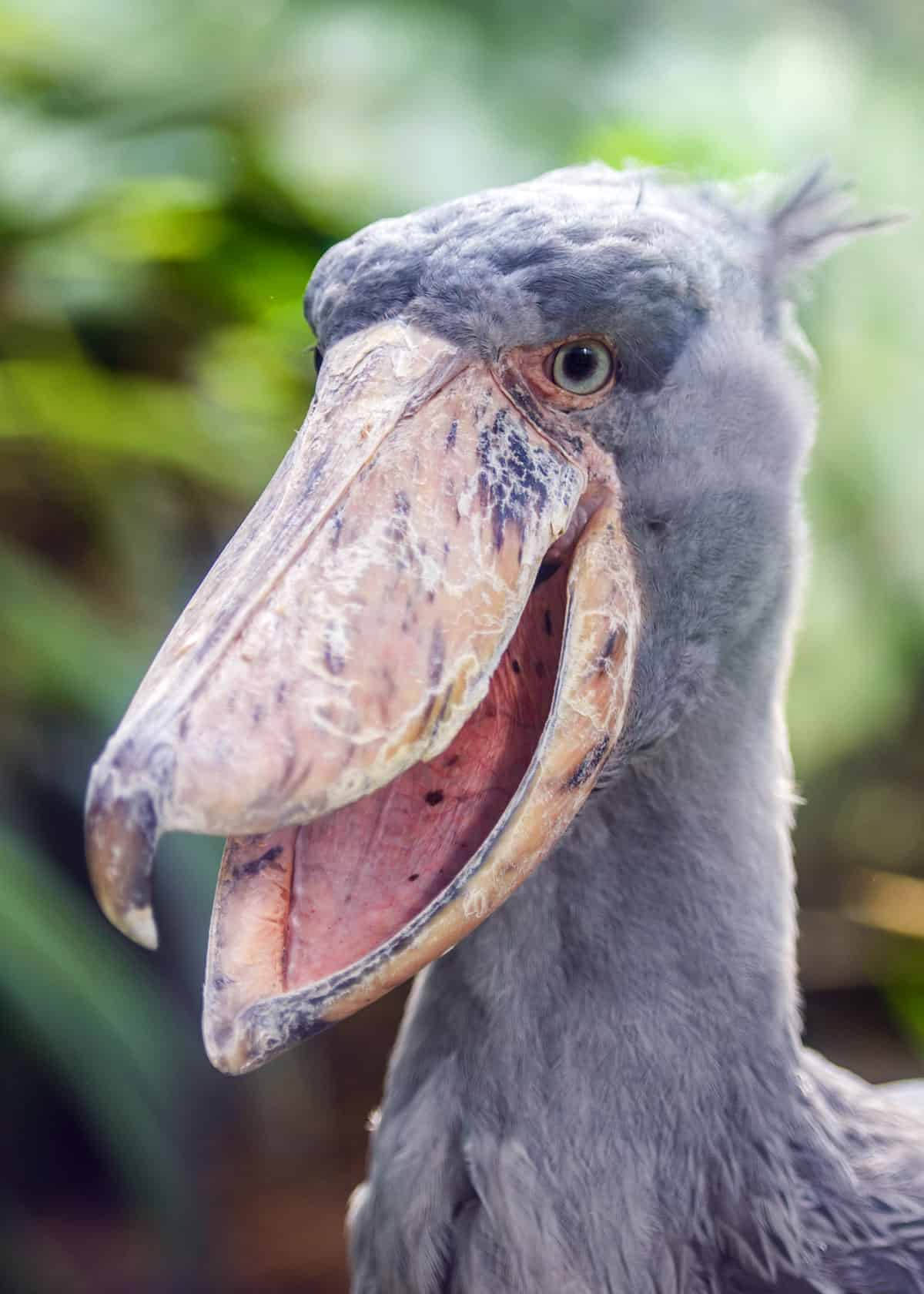
Instead, it’s a quiet loner that remains motionless in the wetlands and patiently waits for its prey to swim to it.
Recommended Videos
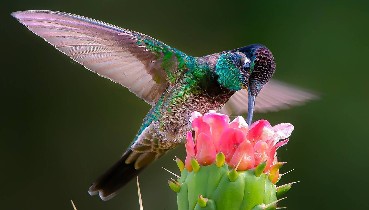 Rivoli's hummingbird (Eugenes fulgens) is a large hummingbird.311 views
Rivoli's hummingbird (Eugenes fulgens) is a large hummingbird.311 views Photographer Finds Locations Of 1960s Postcards To See How They Look Today, And The Difference Is Unbelievable2441 views
Photographer Finds Locations Of 1960s Postcards To See How They Look Today, And The Difference Is Unbelievable2441 views-
Advertisements
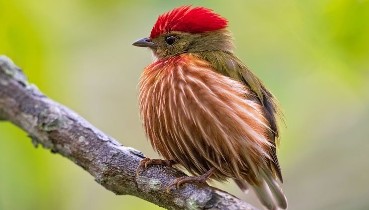 The Striolated Manakin Is The Roundest And The Sweetest Bird That You Will Ever Meet (6+ Photos)120 views
The Striolated Manakin Is The Roundest And The Sweetest Bird That You Will Ever Meet (6+ Photos)120 views The 42 Most Naked Dresses of All Time8347 views
The 42 Most Naked Dresses of All Time8347 views Asia’s Tallest Tree Discovered in World’s Deepest Canyon in Tibet116 views
Asia’s Tallest Tree Discovered in World’s Deepest Canyon in Tibet116 views 20 Enchanting Wire Sculptures Of Fairies, Created By Robin Wight285 views
20 Enchanting Wire Sculptures Of Fairies, Created By Robin Wight285 views 16 Beautiful but Deadly Frogs786 views
16 Beautiful but Deadly Frogs786 views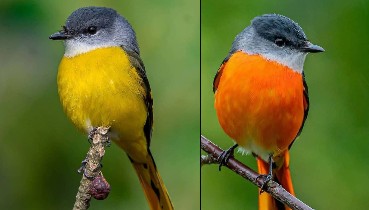 Grey-Chinned Minivet, A Stunning Chubby Bird With Lovely Contrast Between Males And Females312 views
Grey-Chinned Minivet, A Stunning Chubby Bird With Lovely Contrast Between Males And Females312 views















